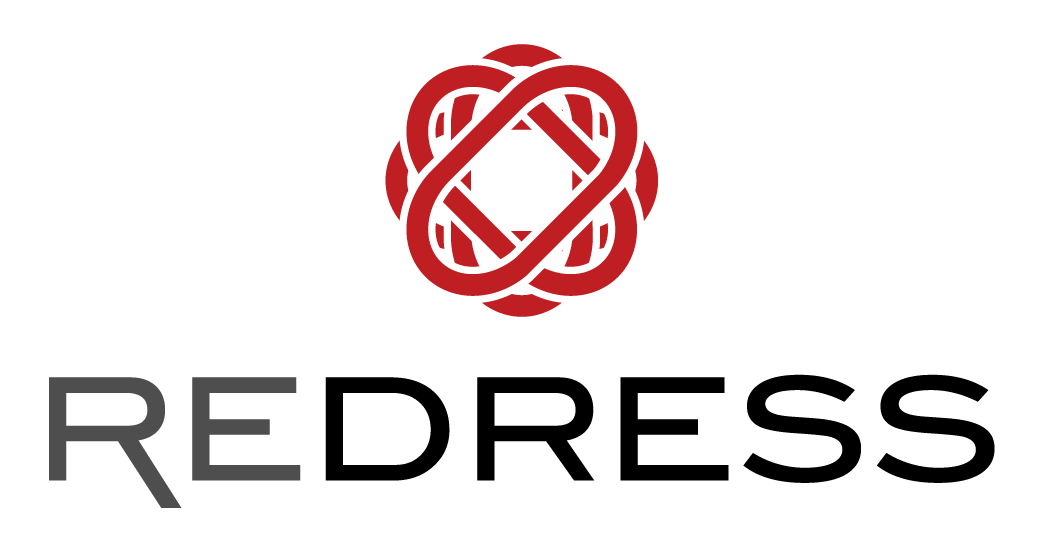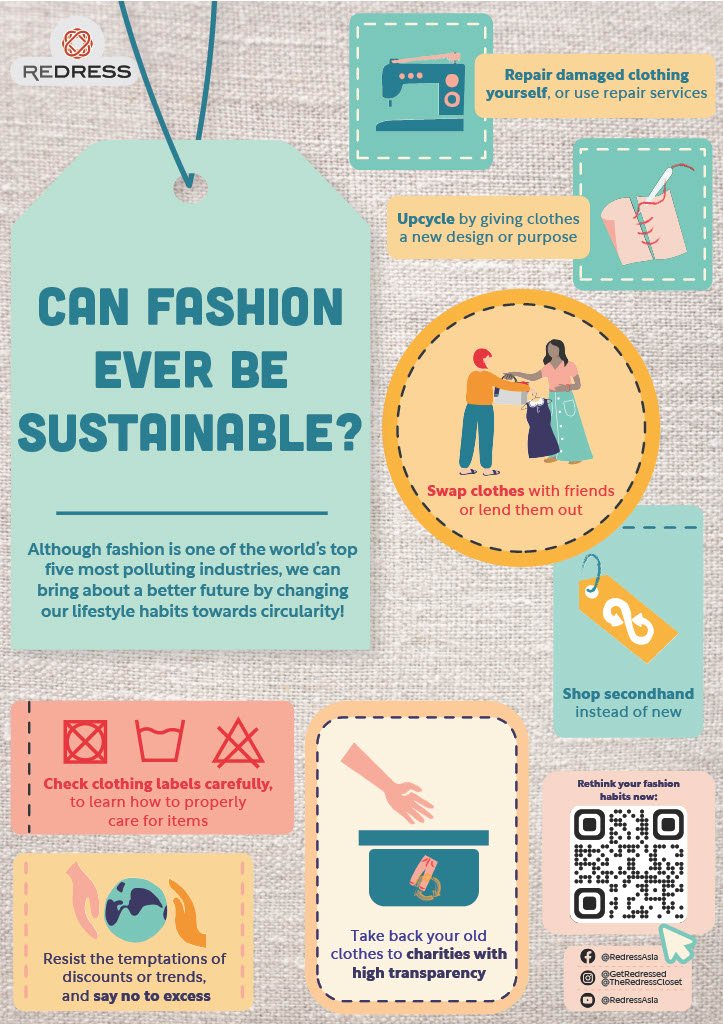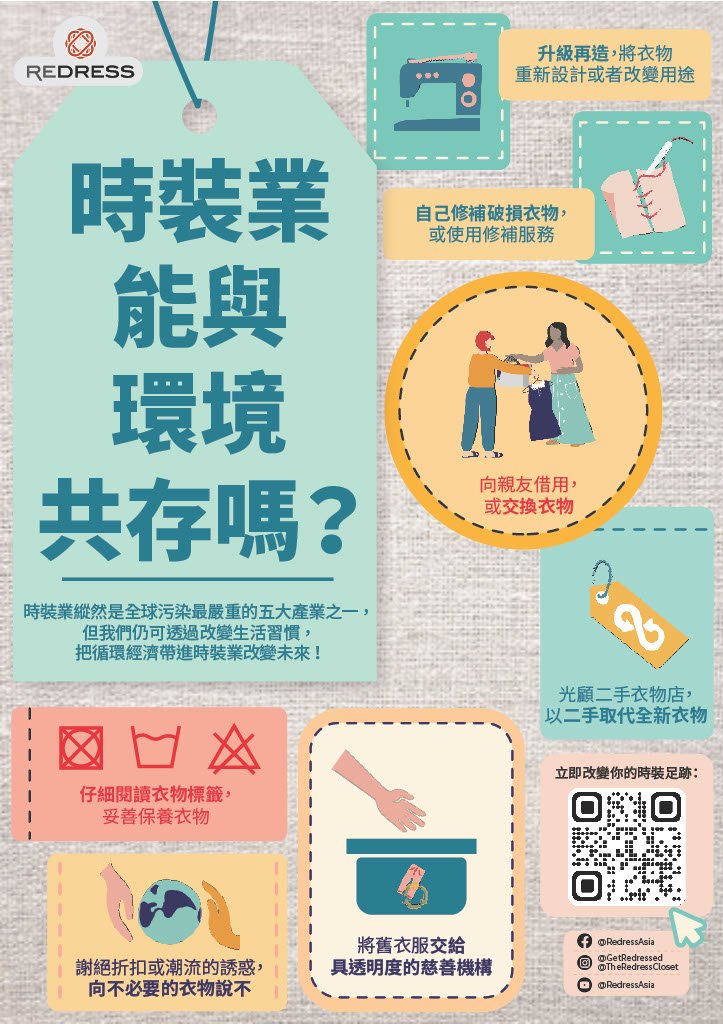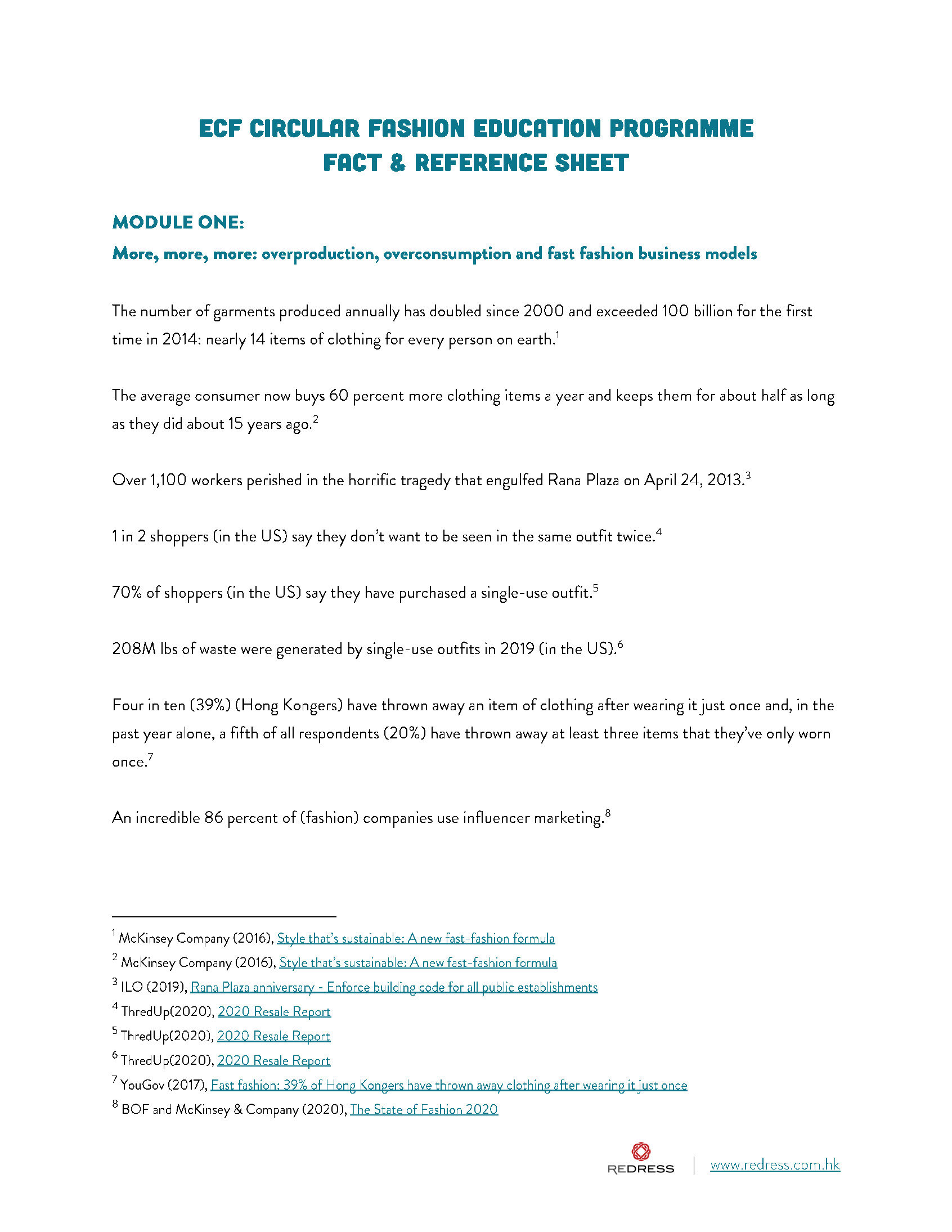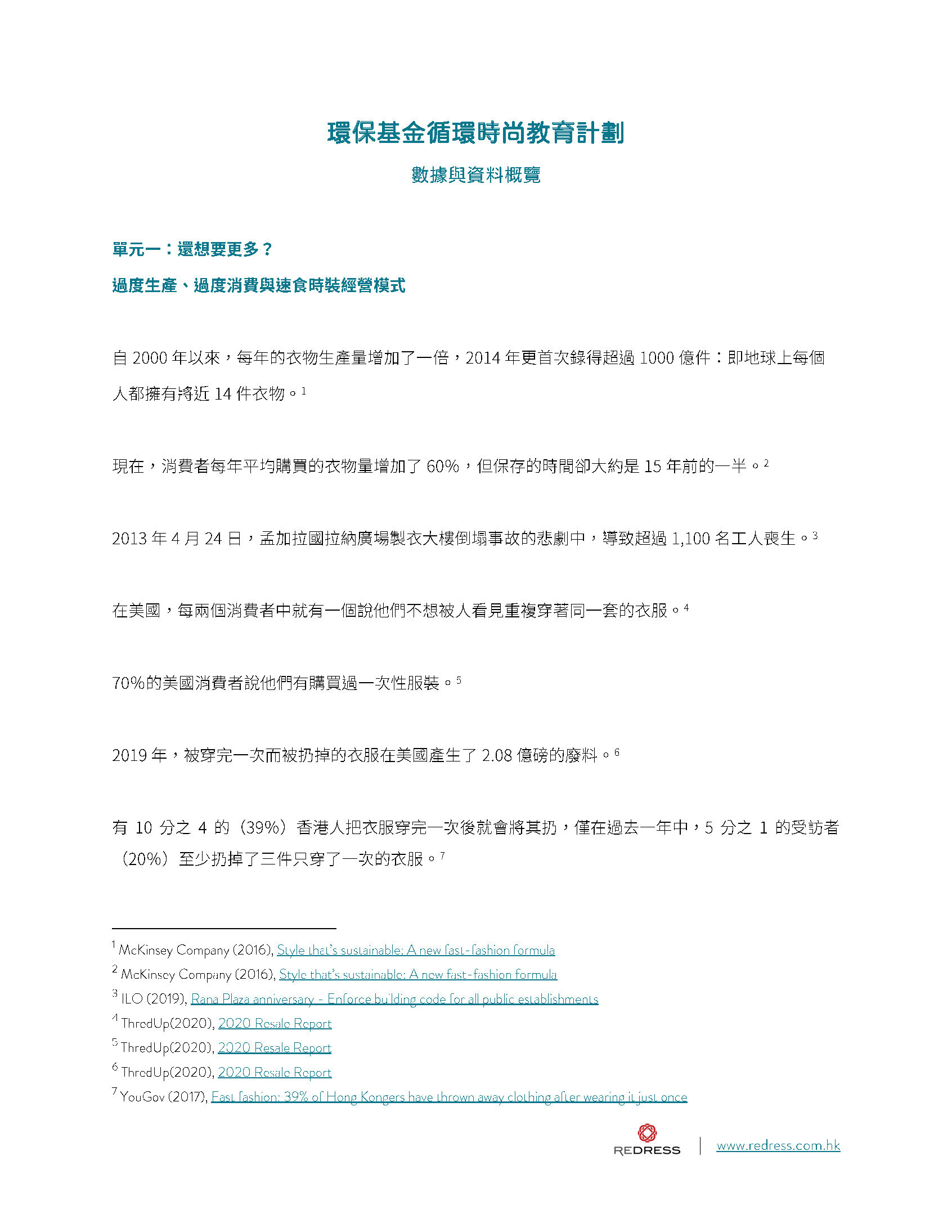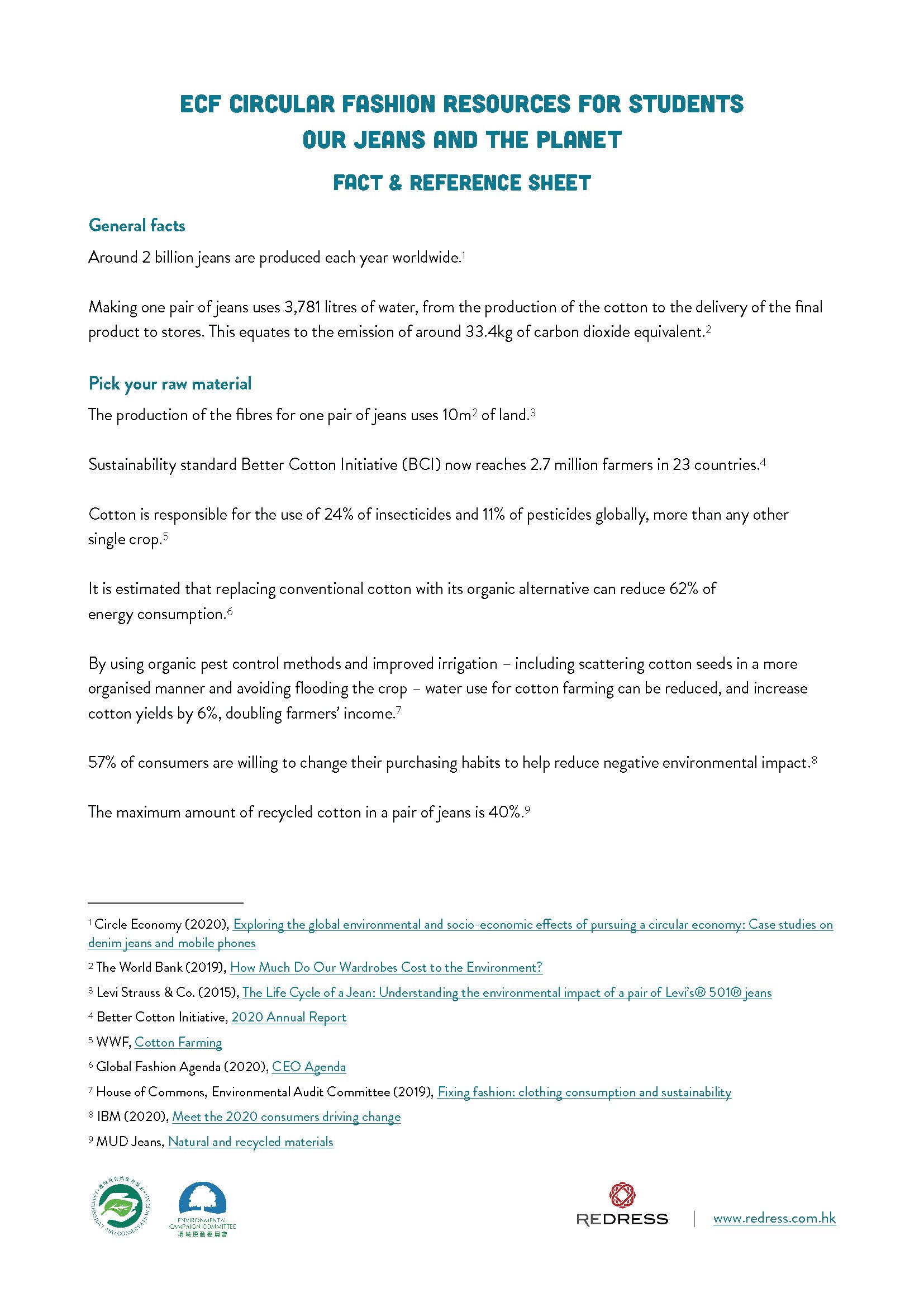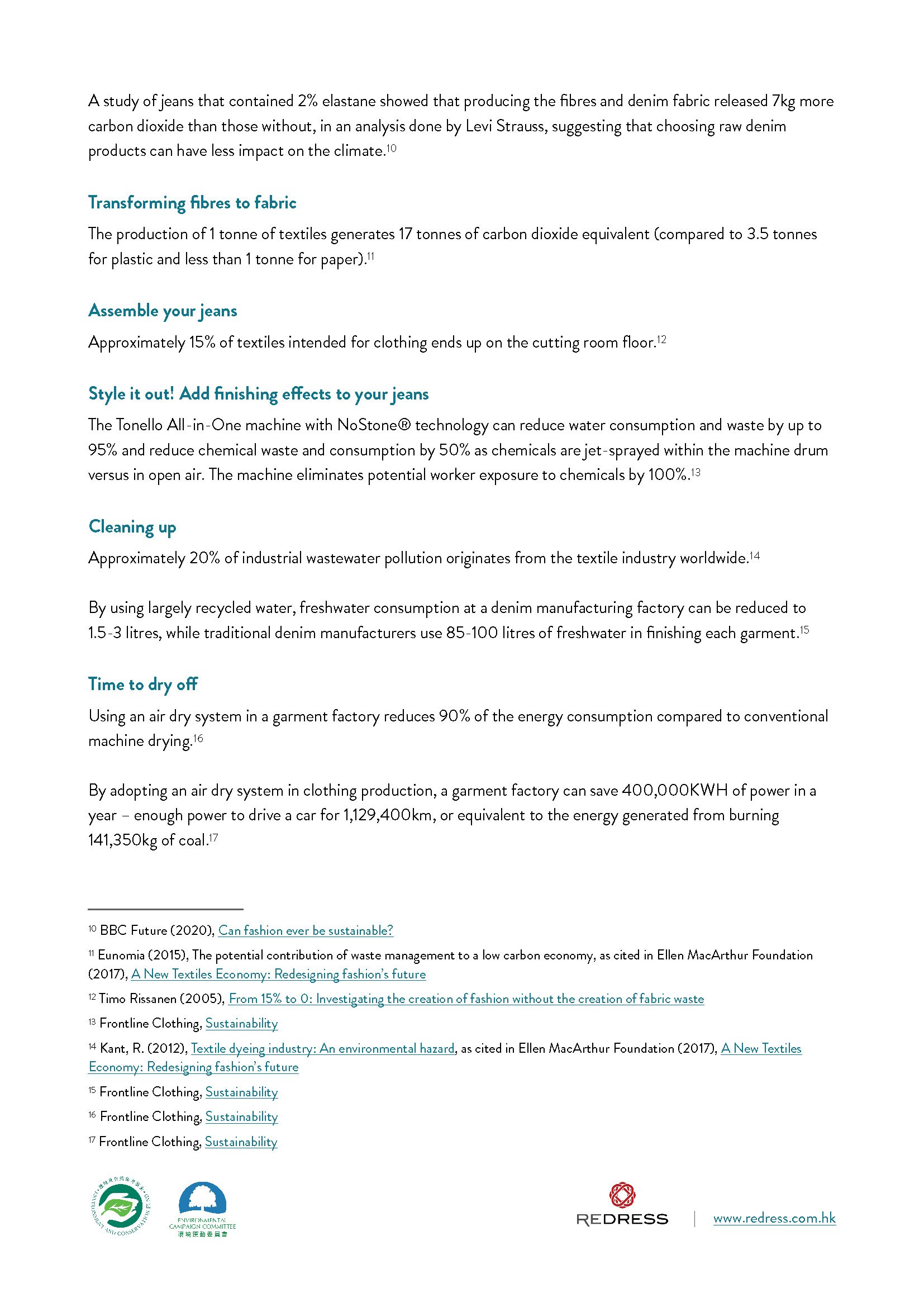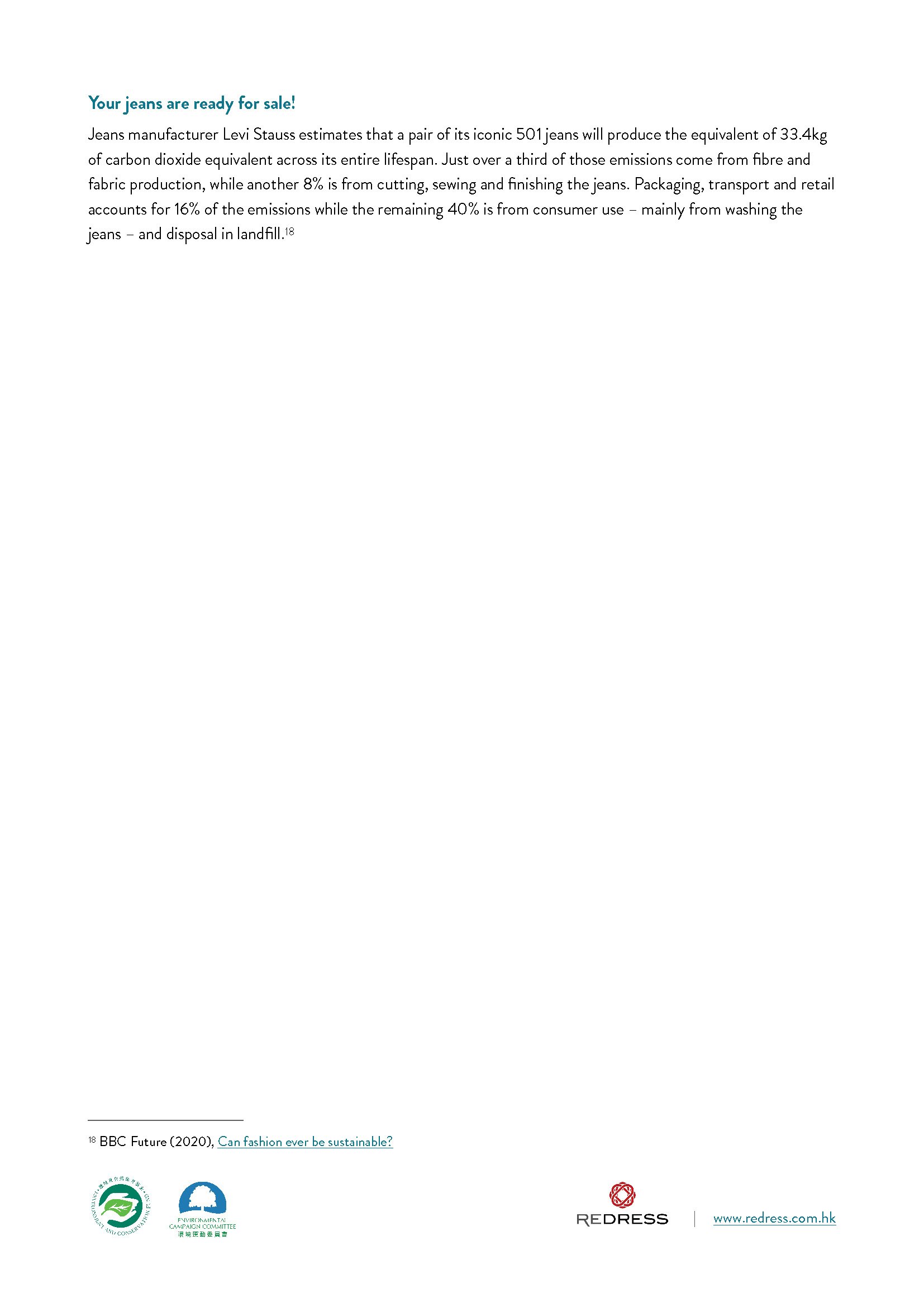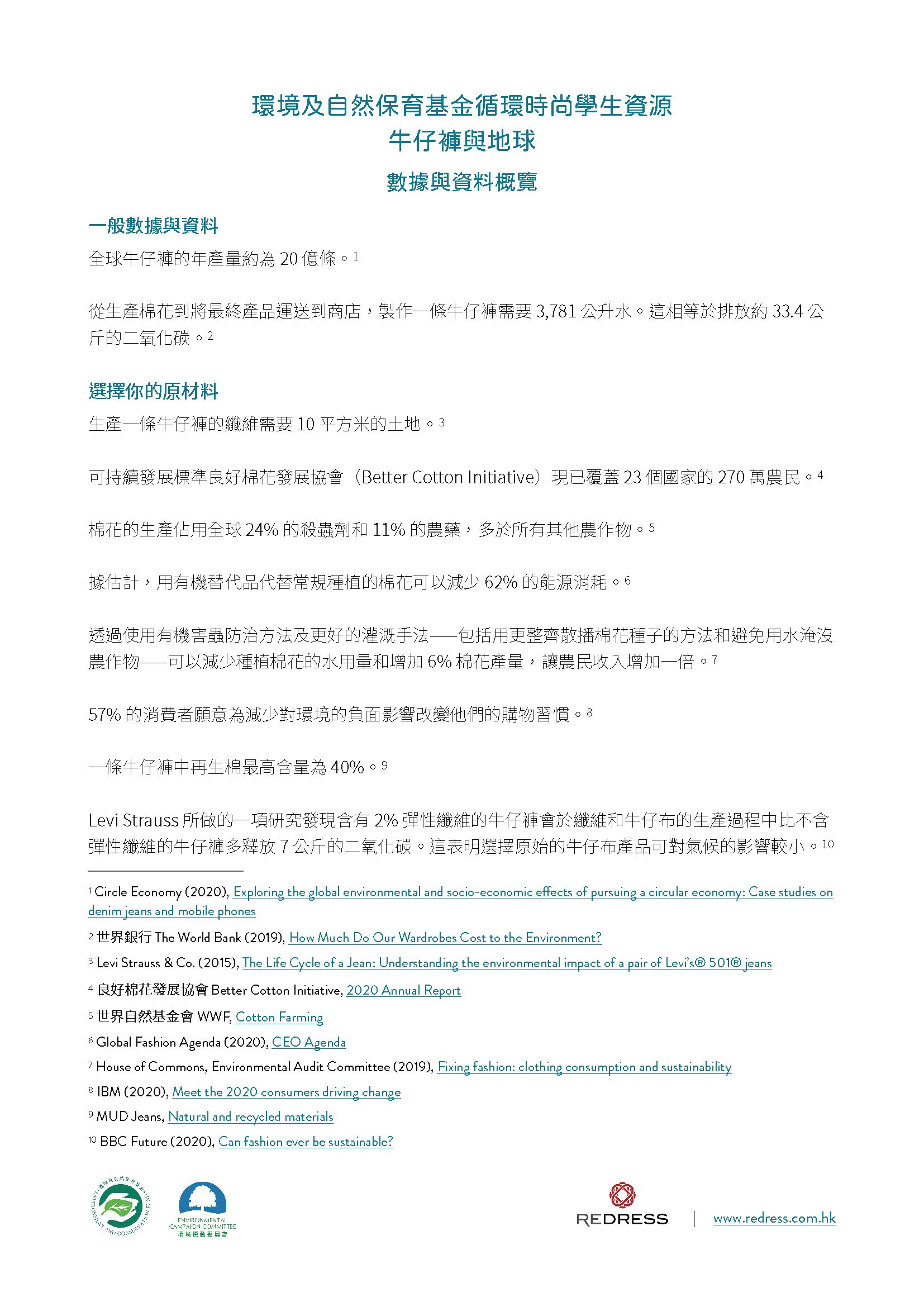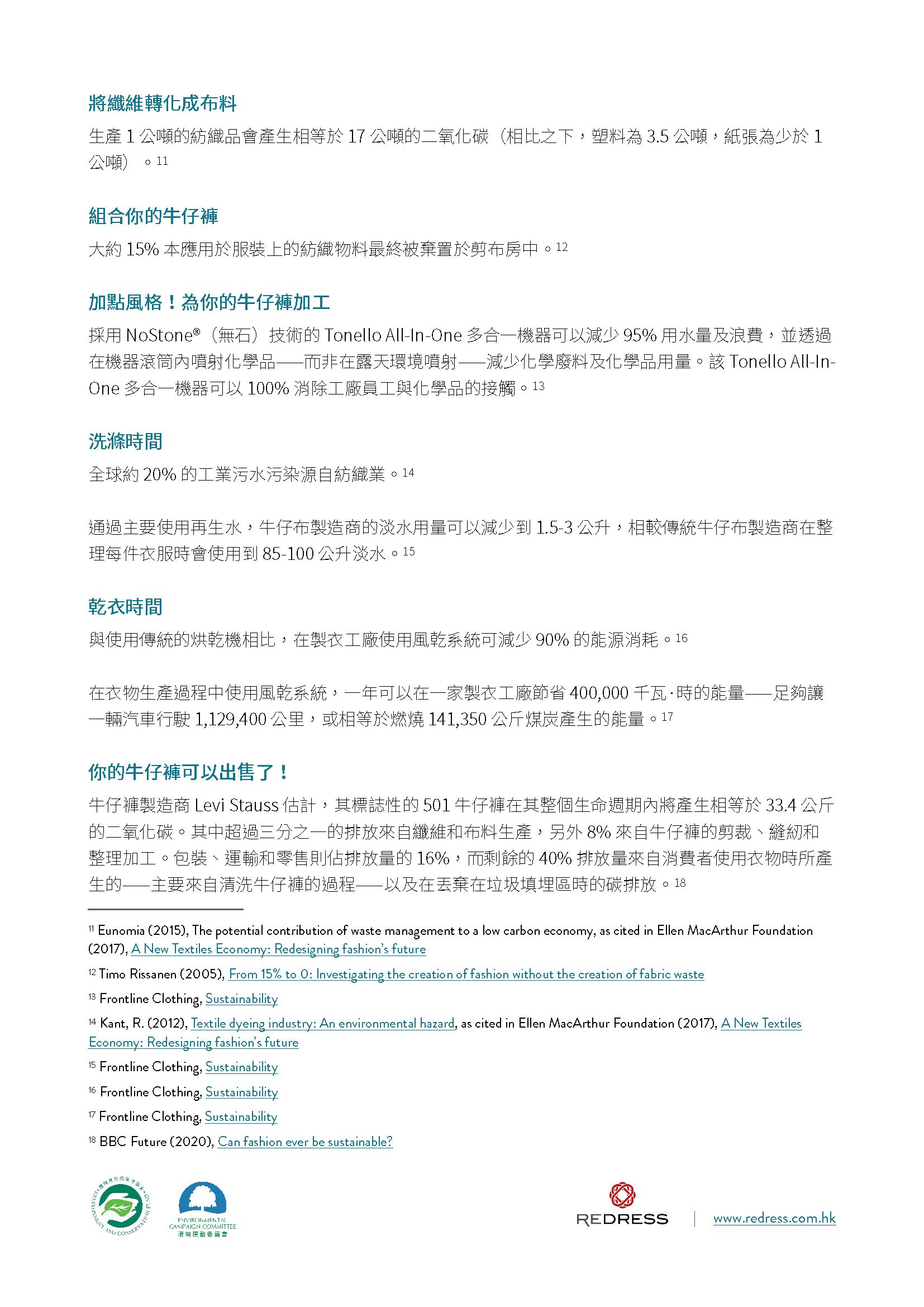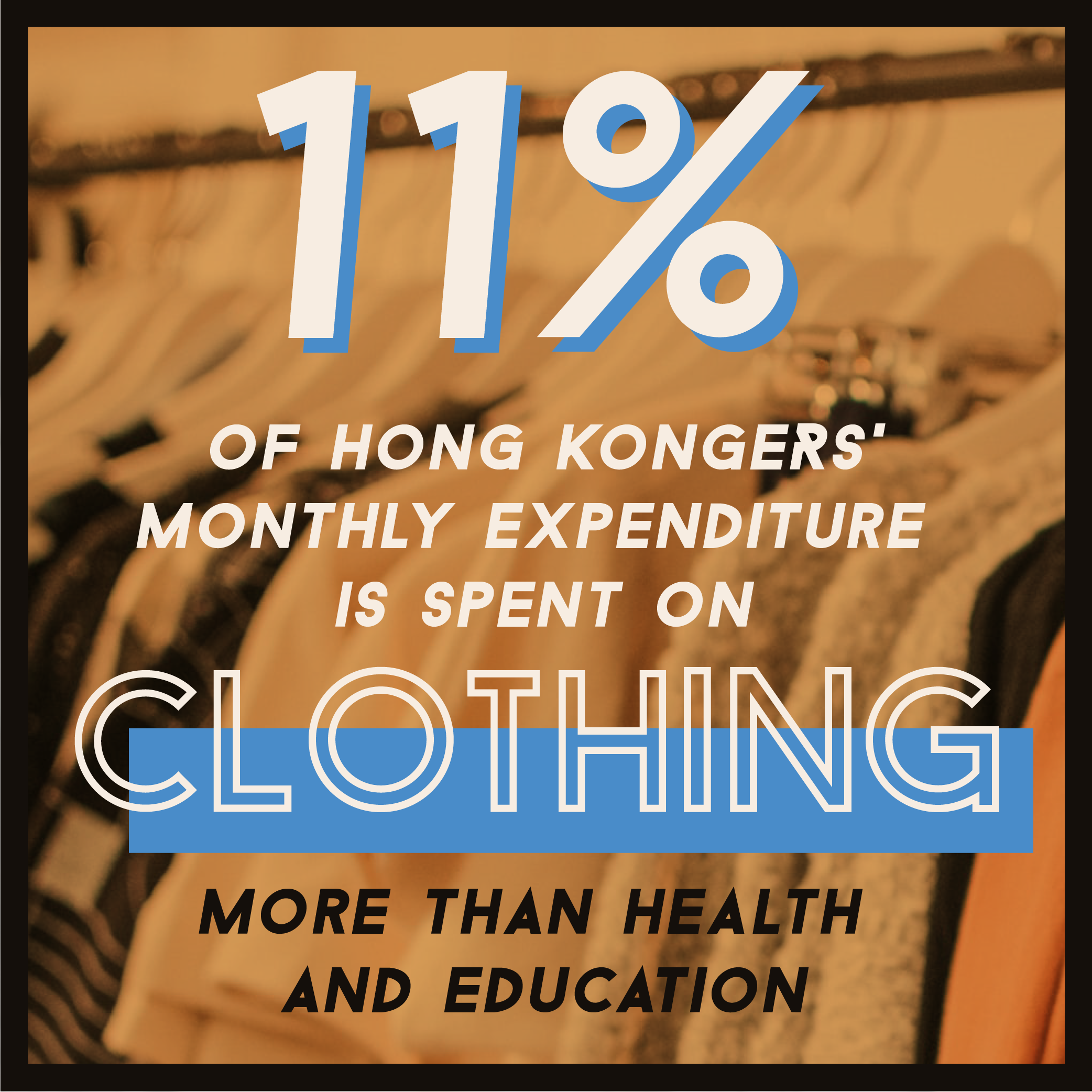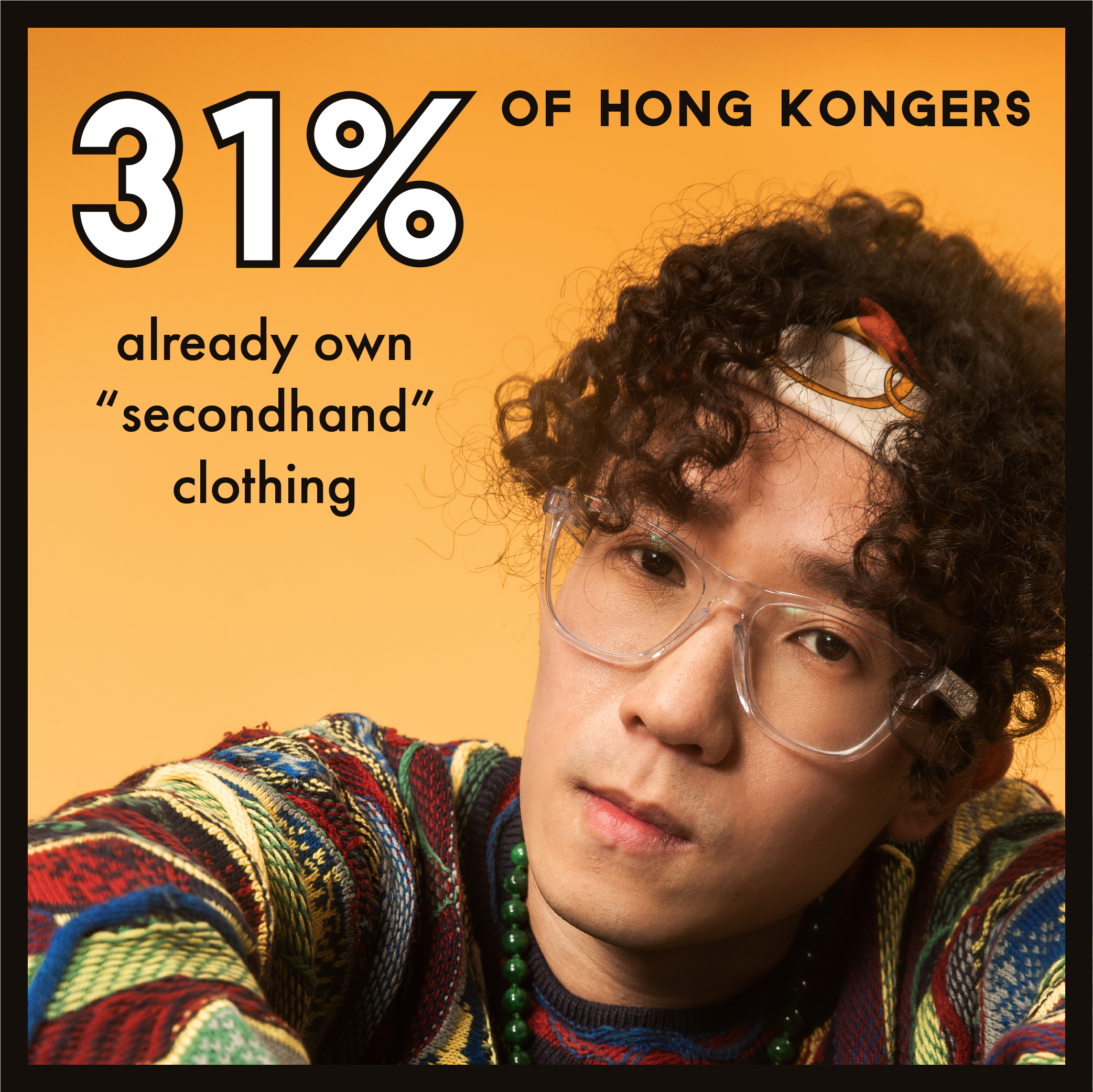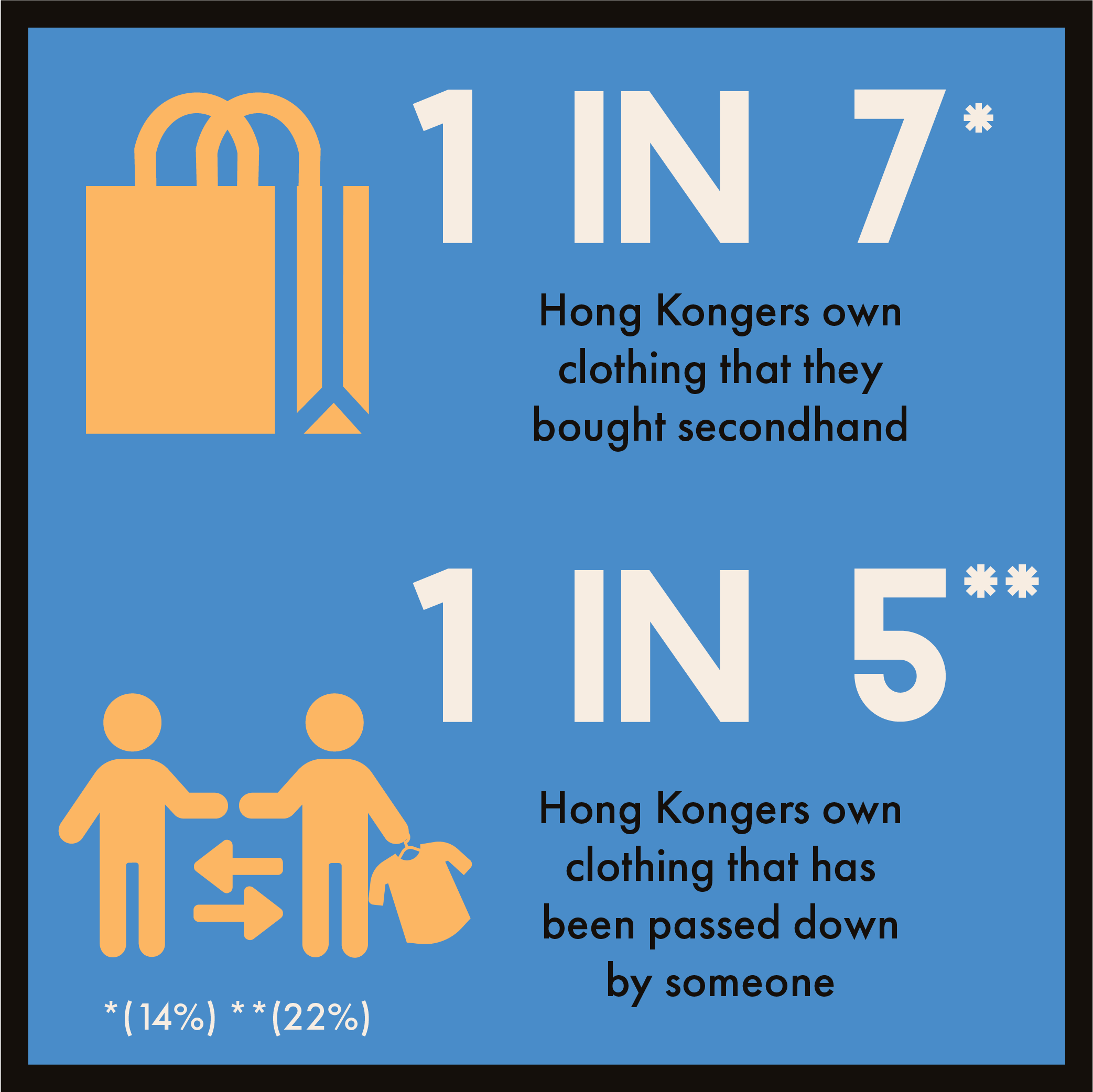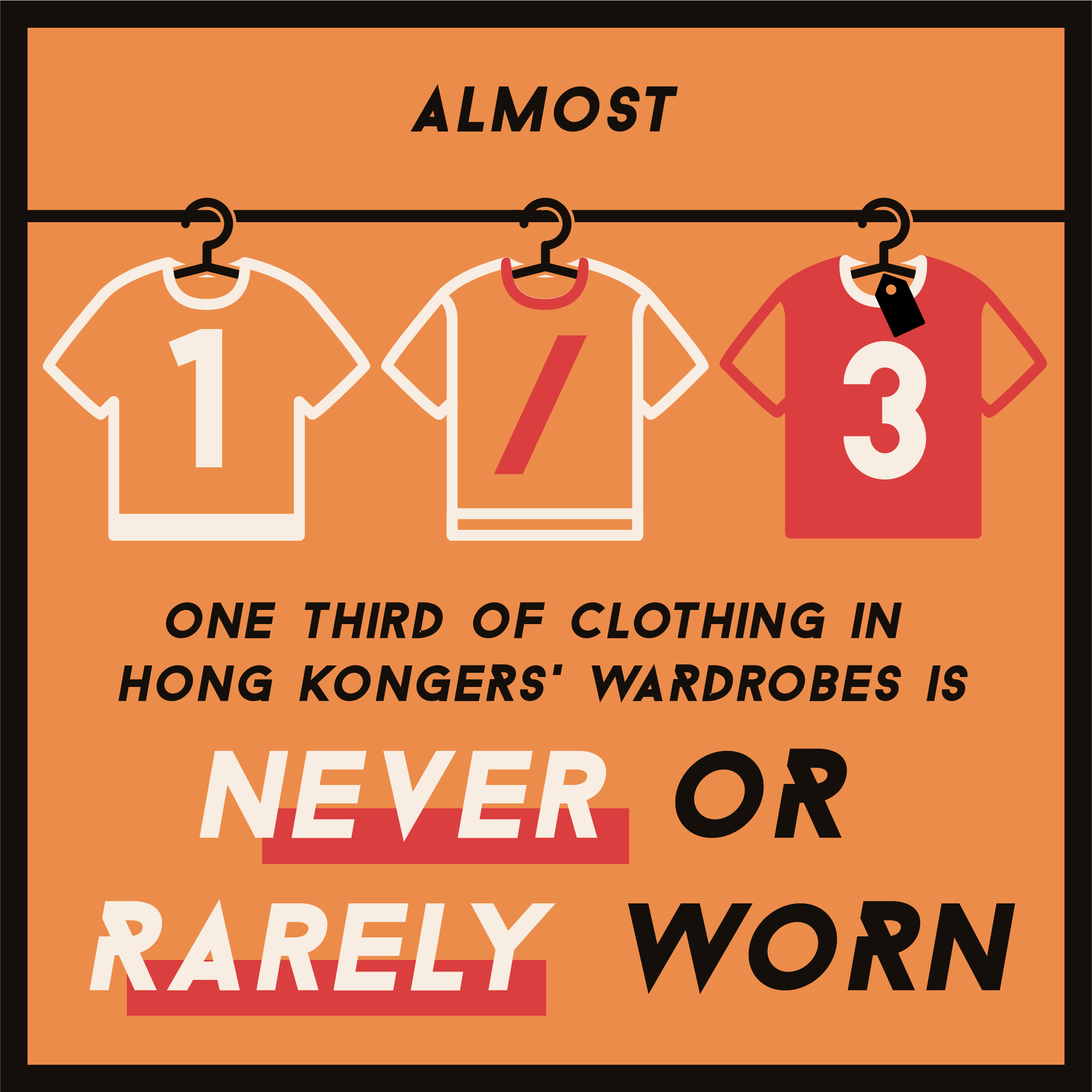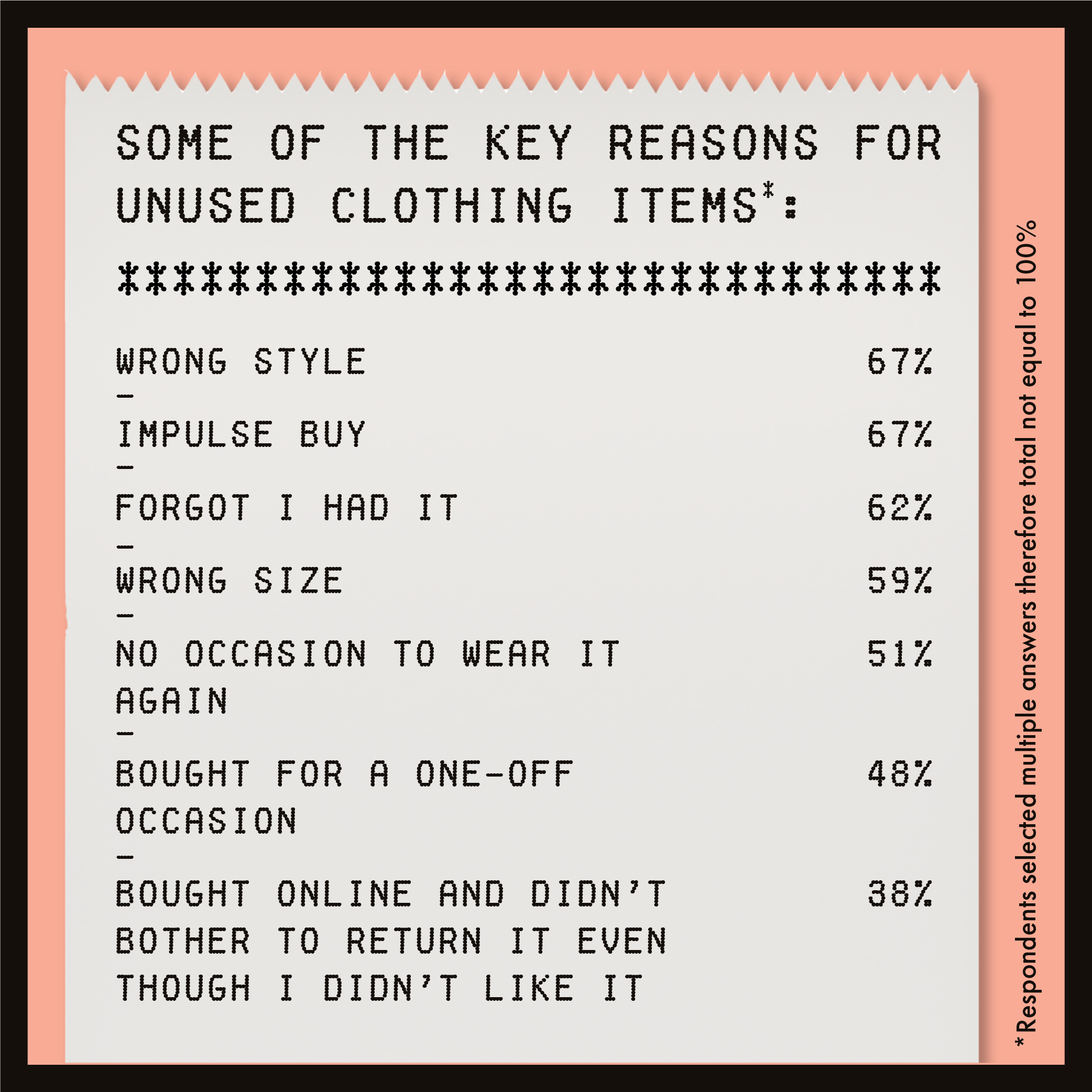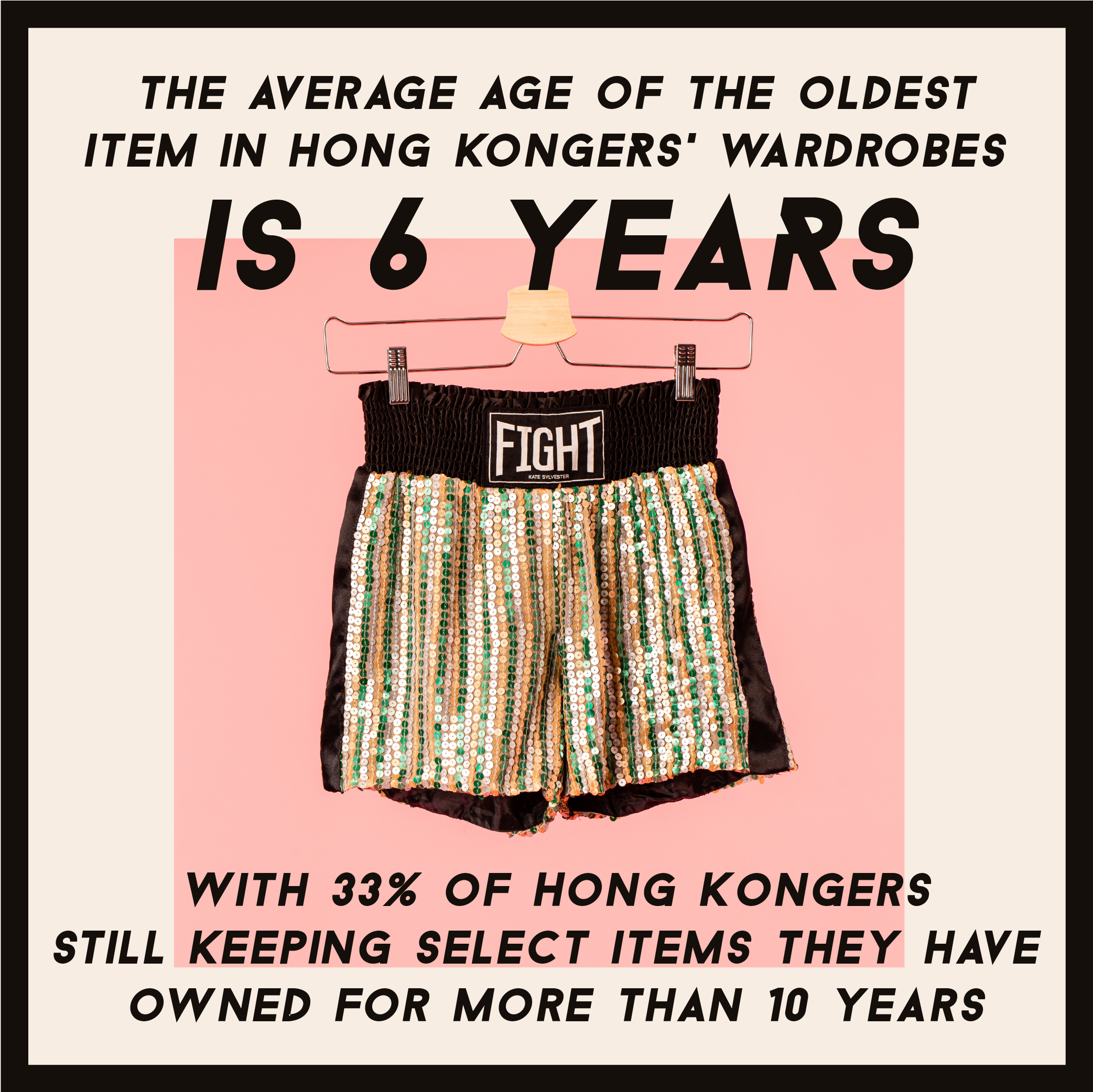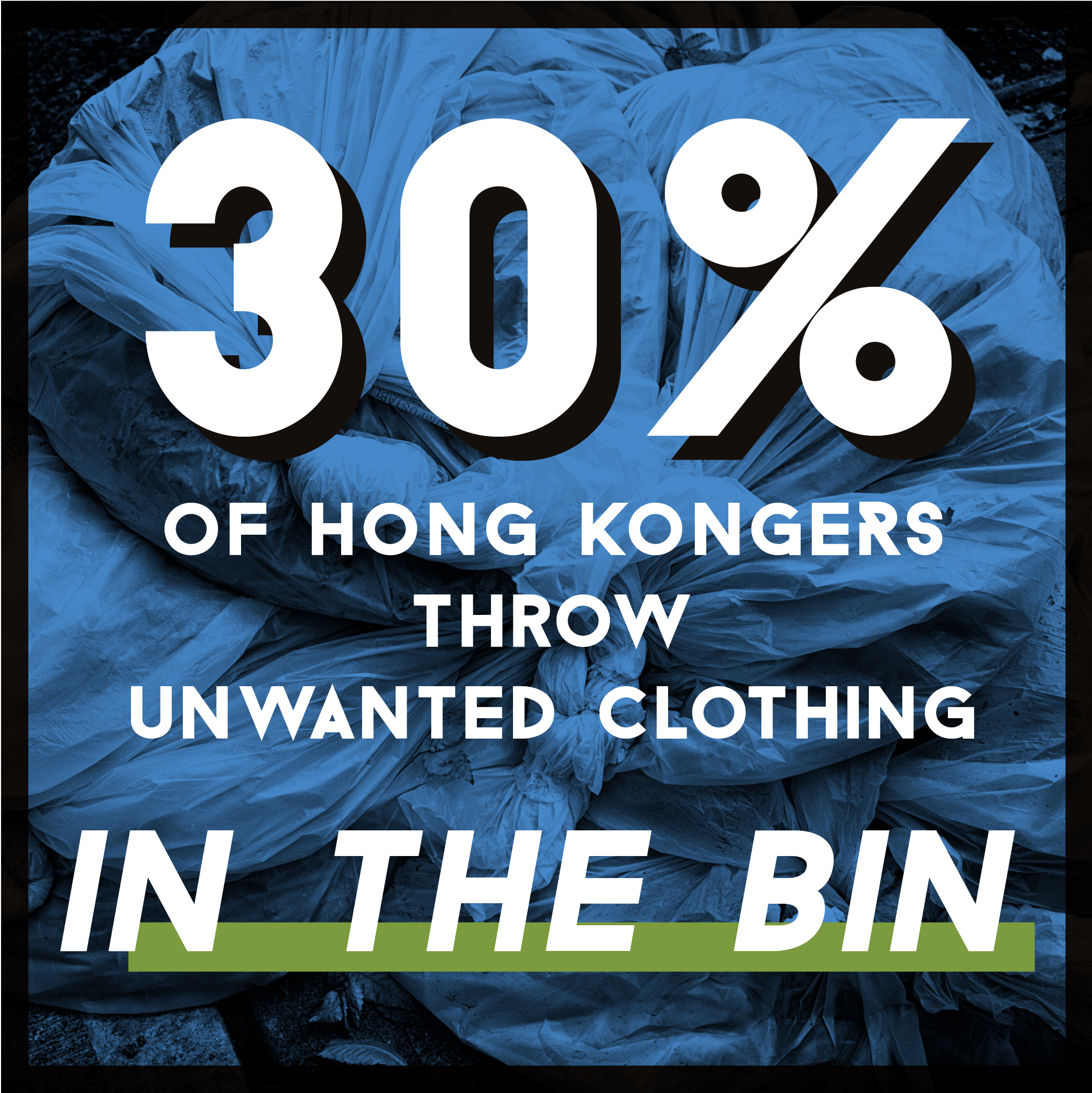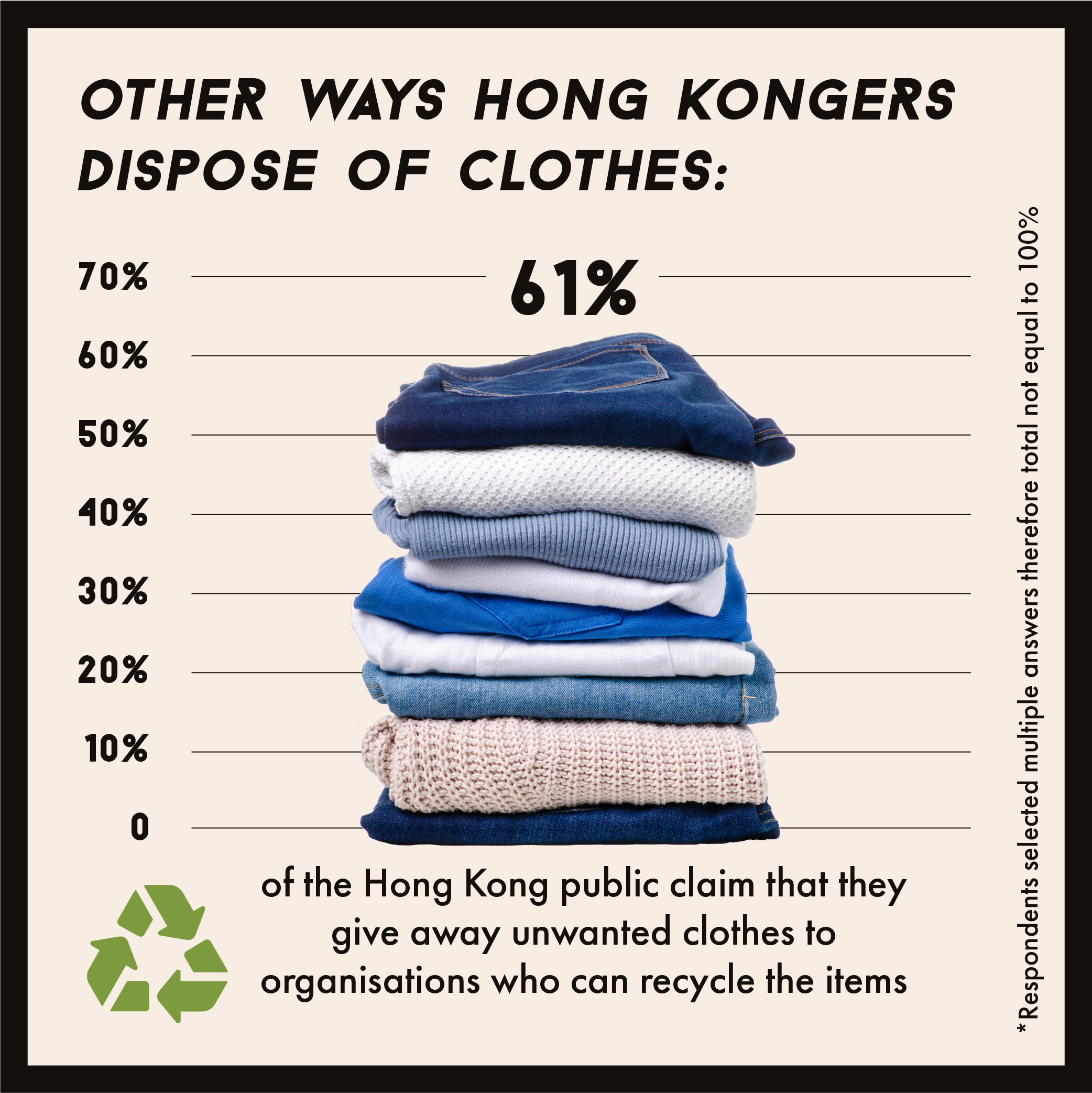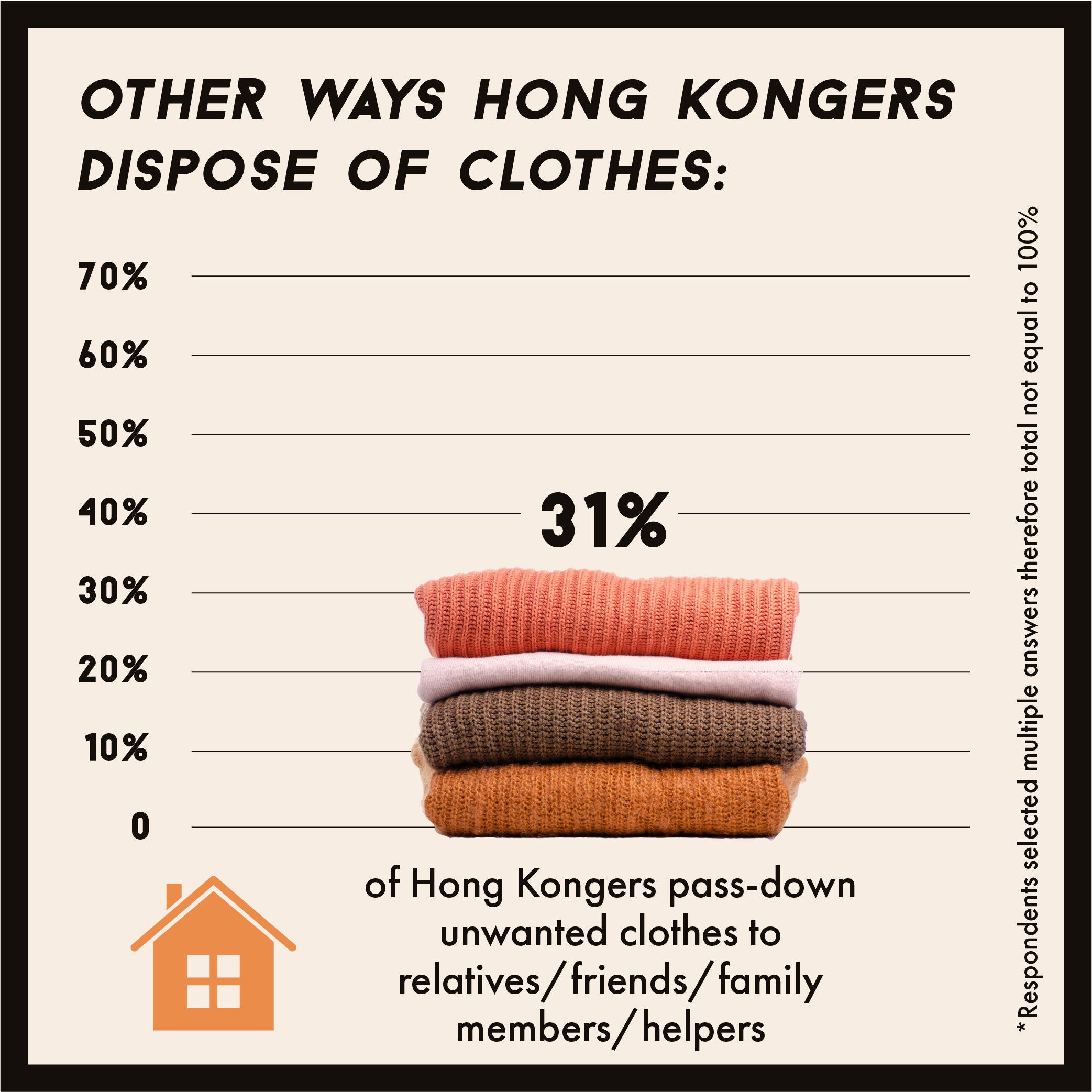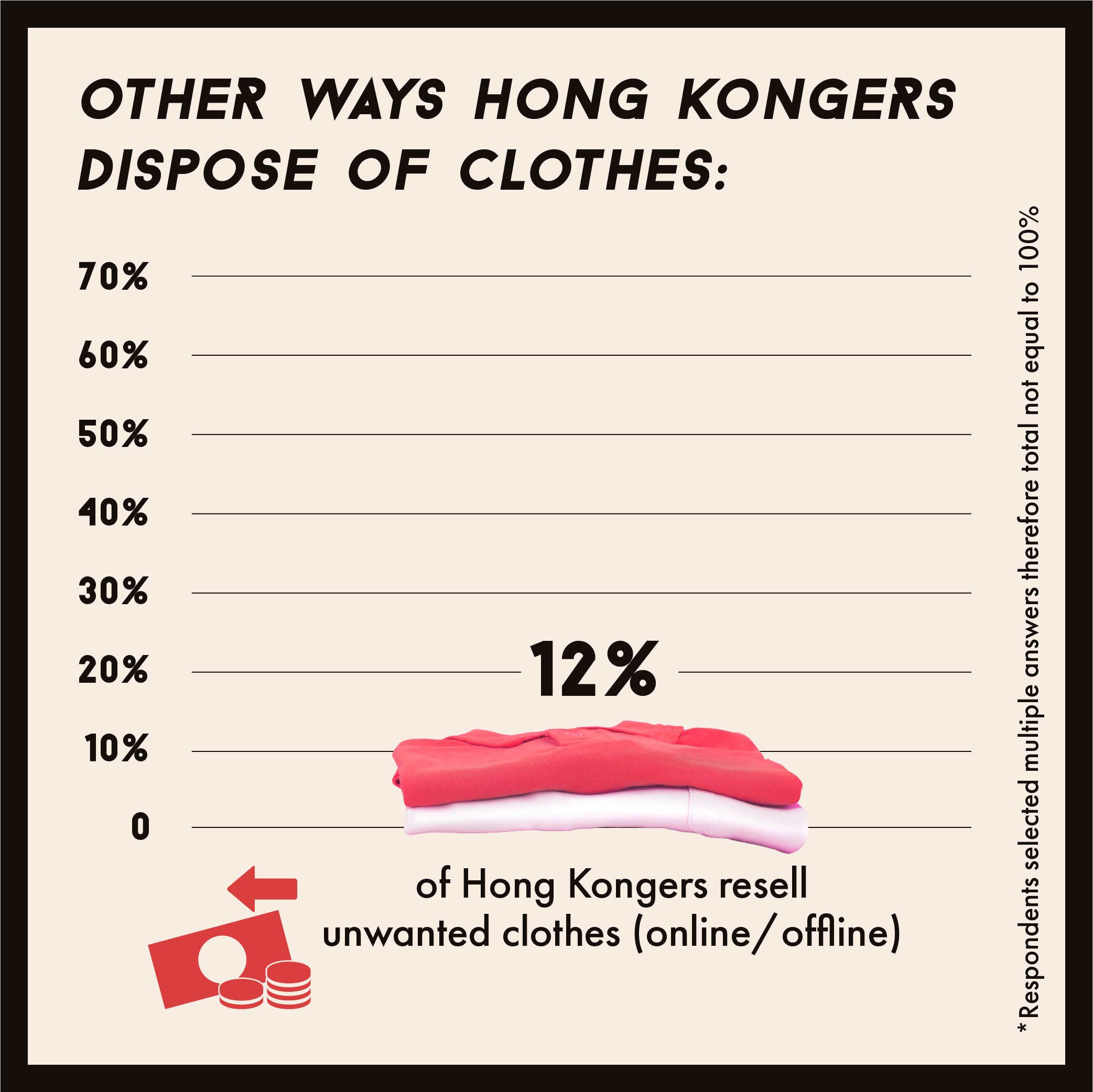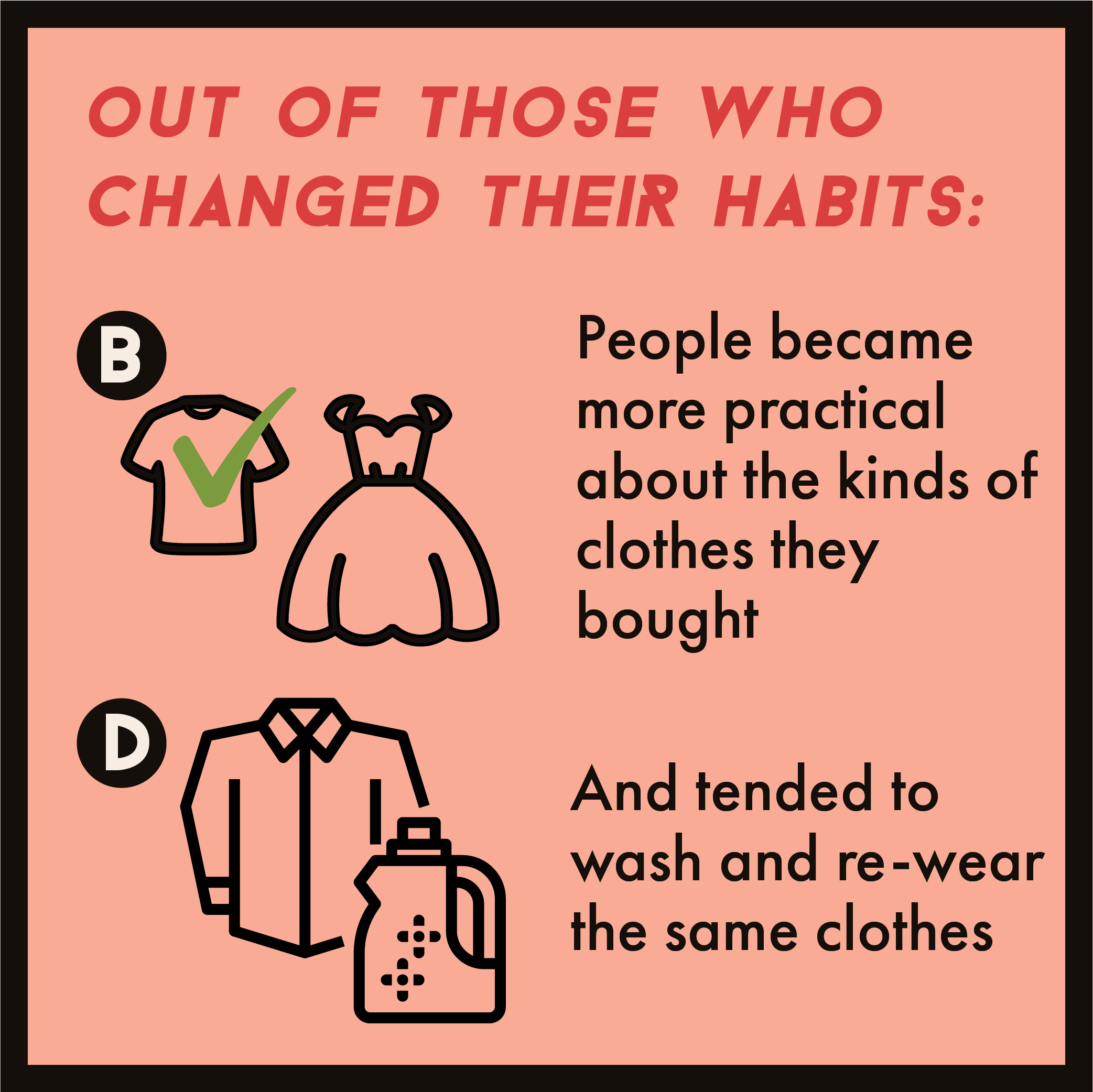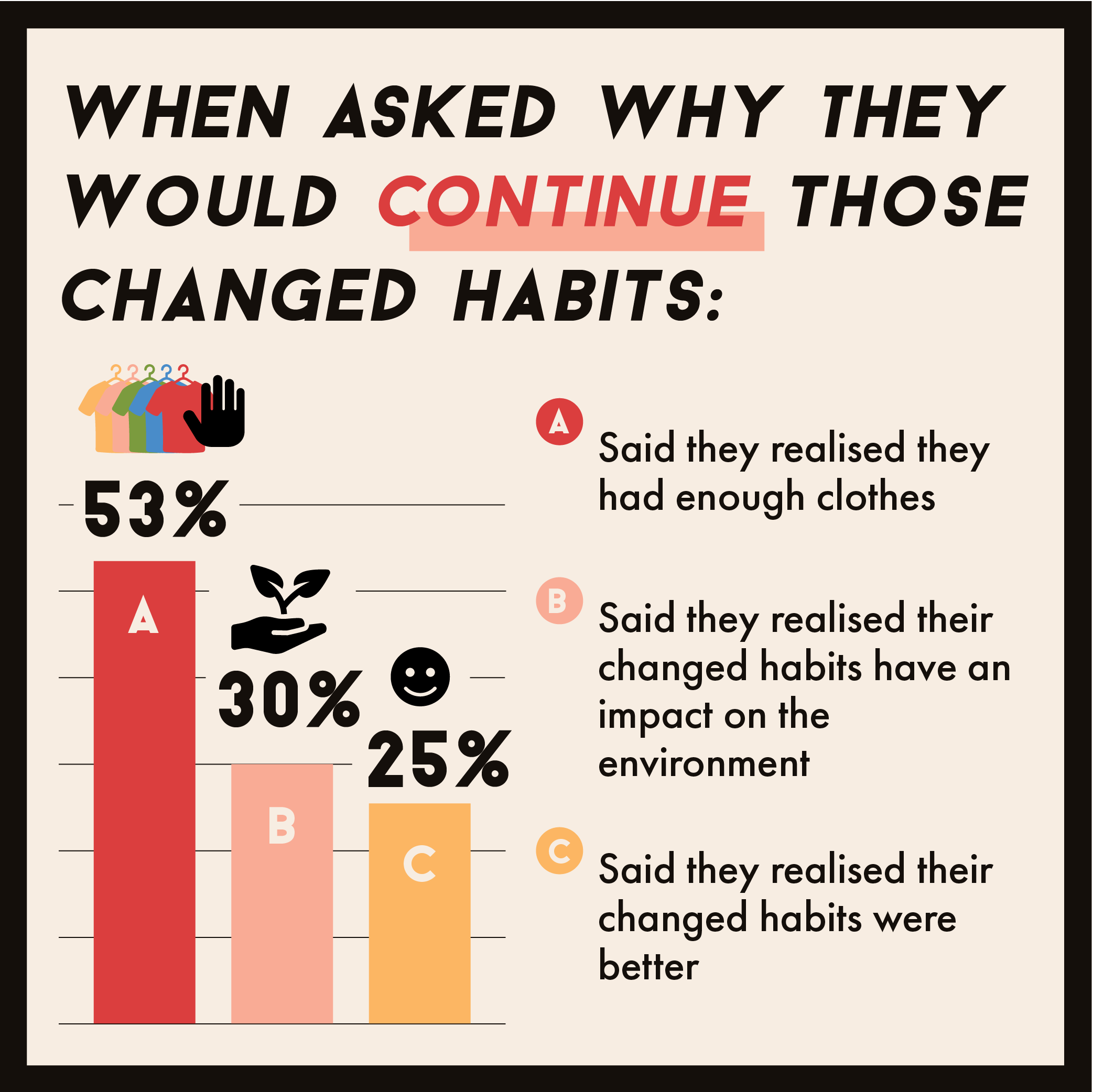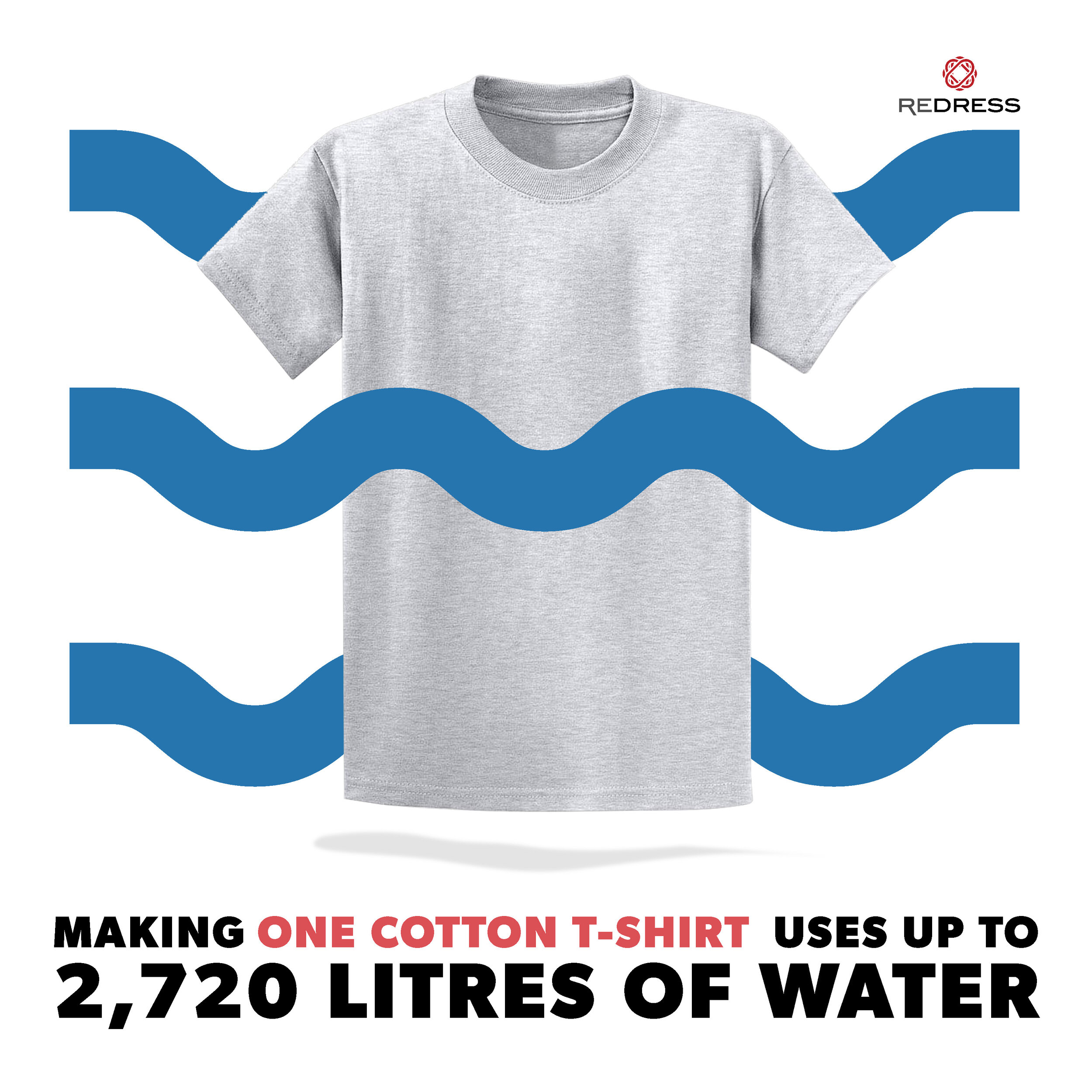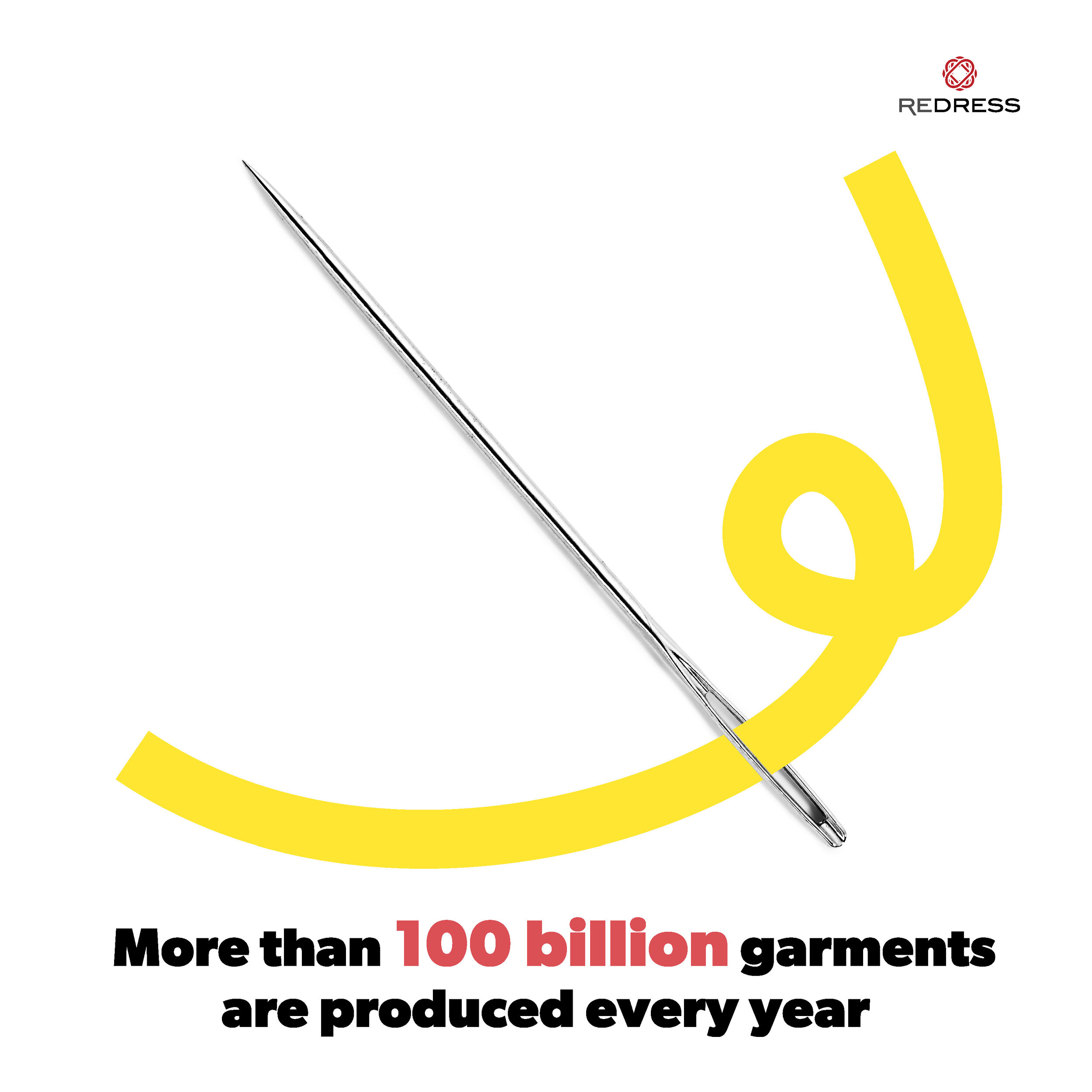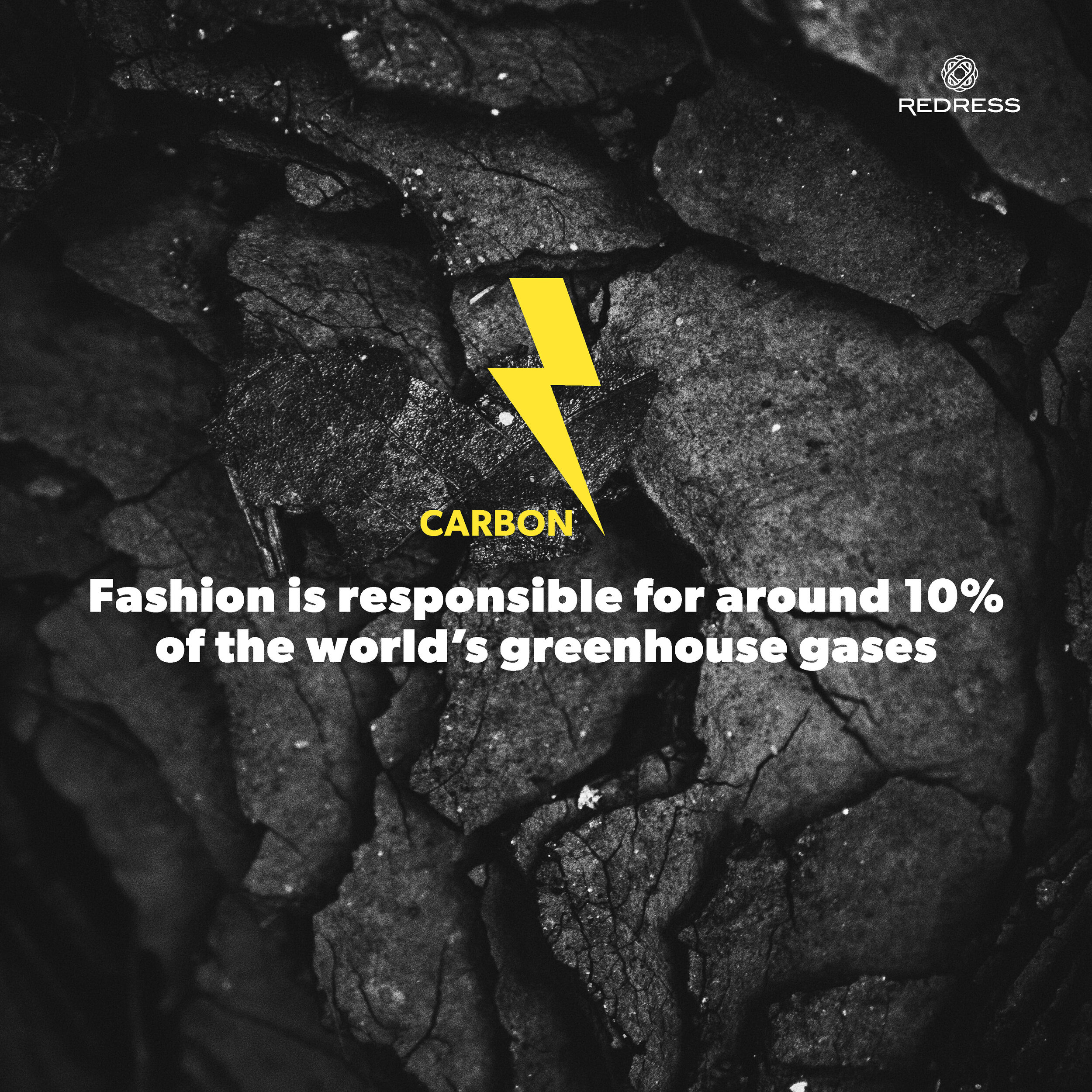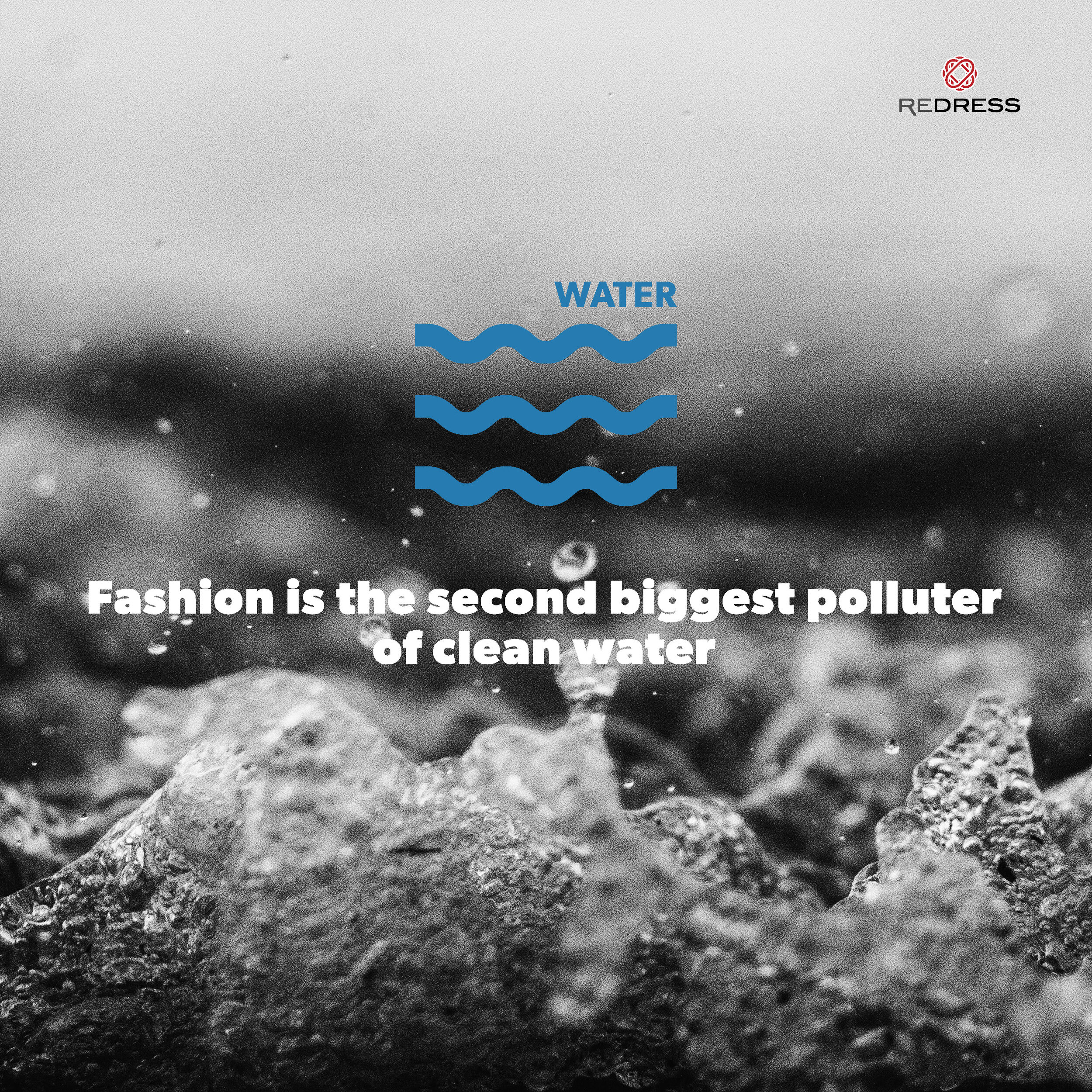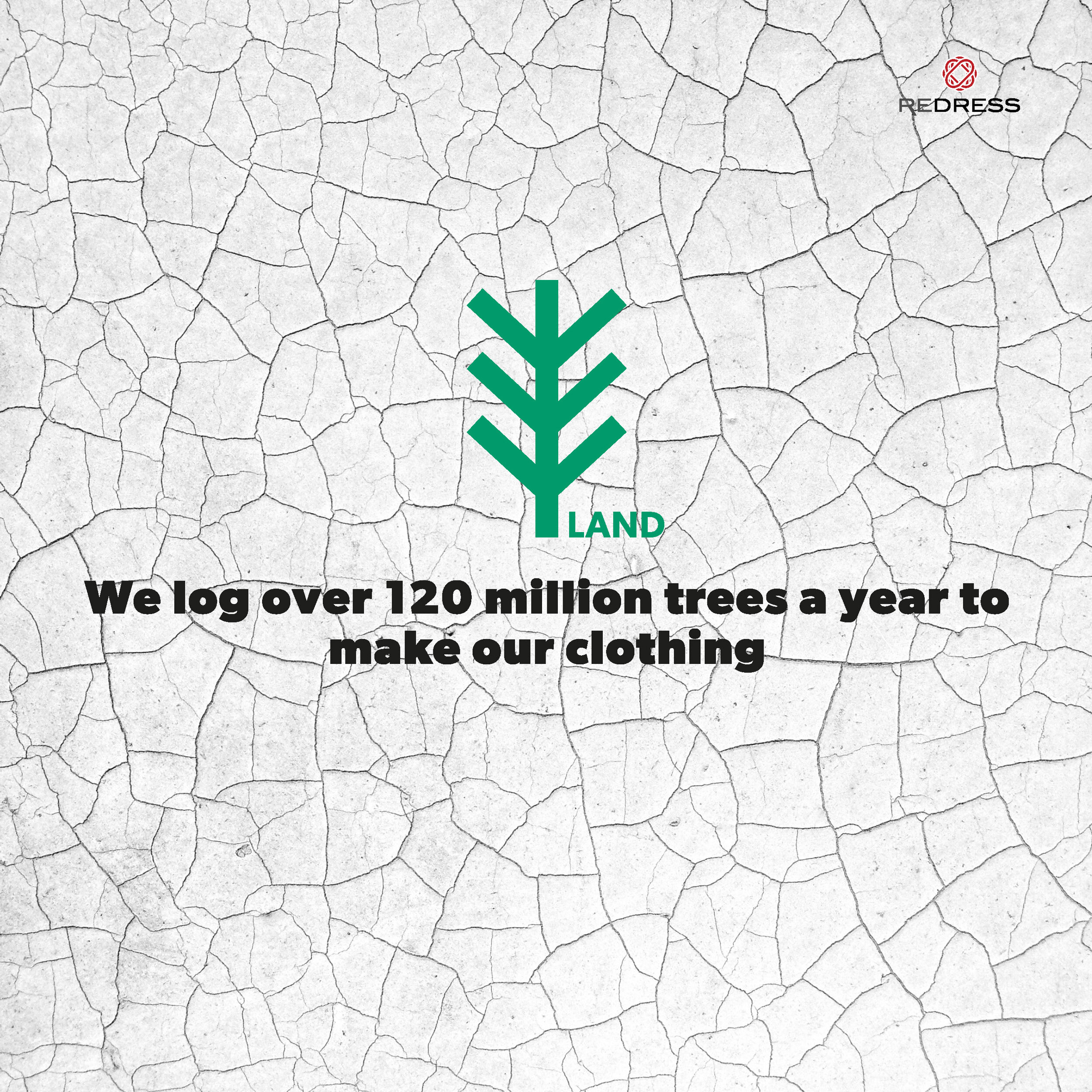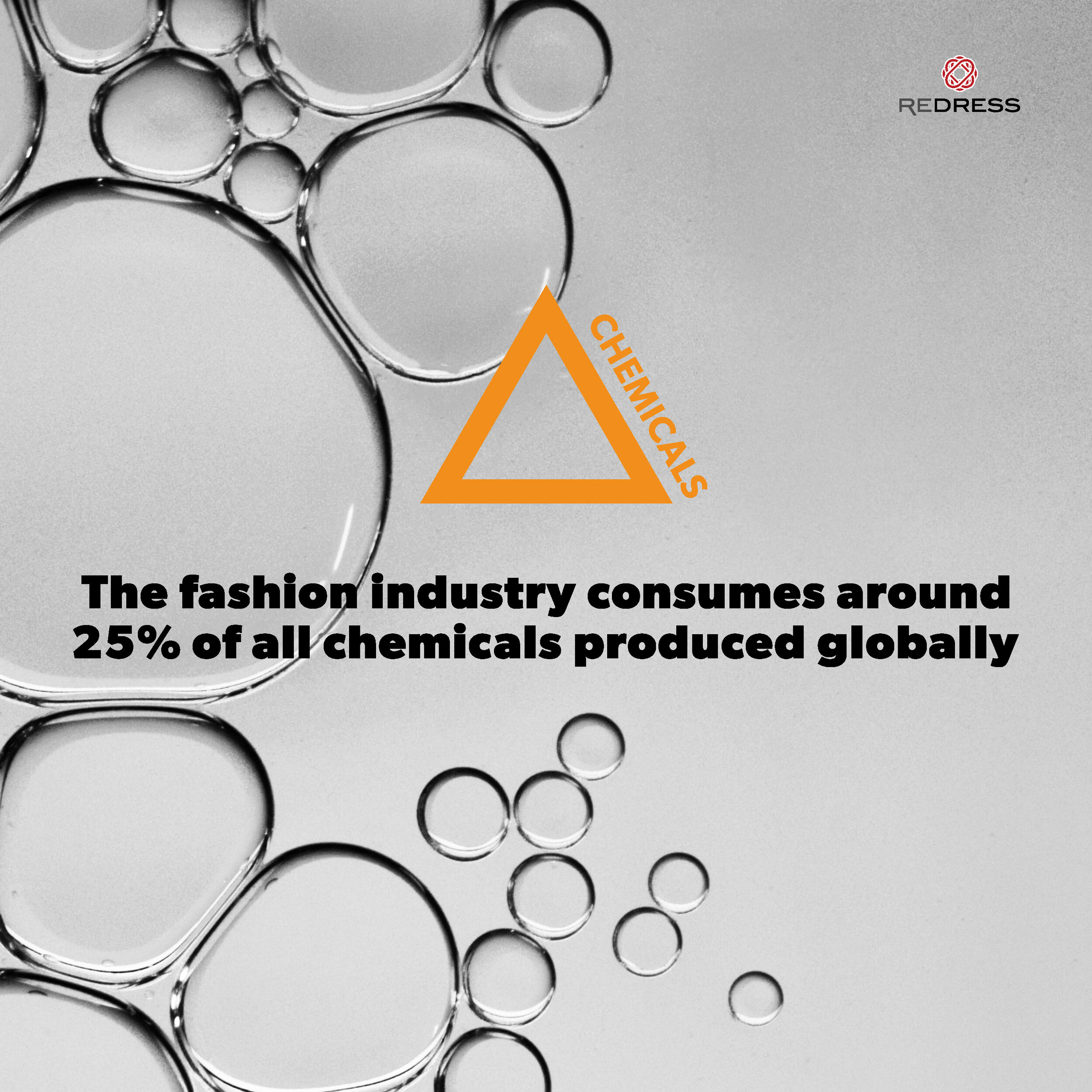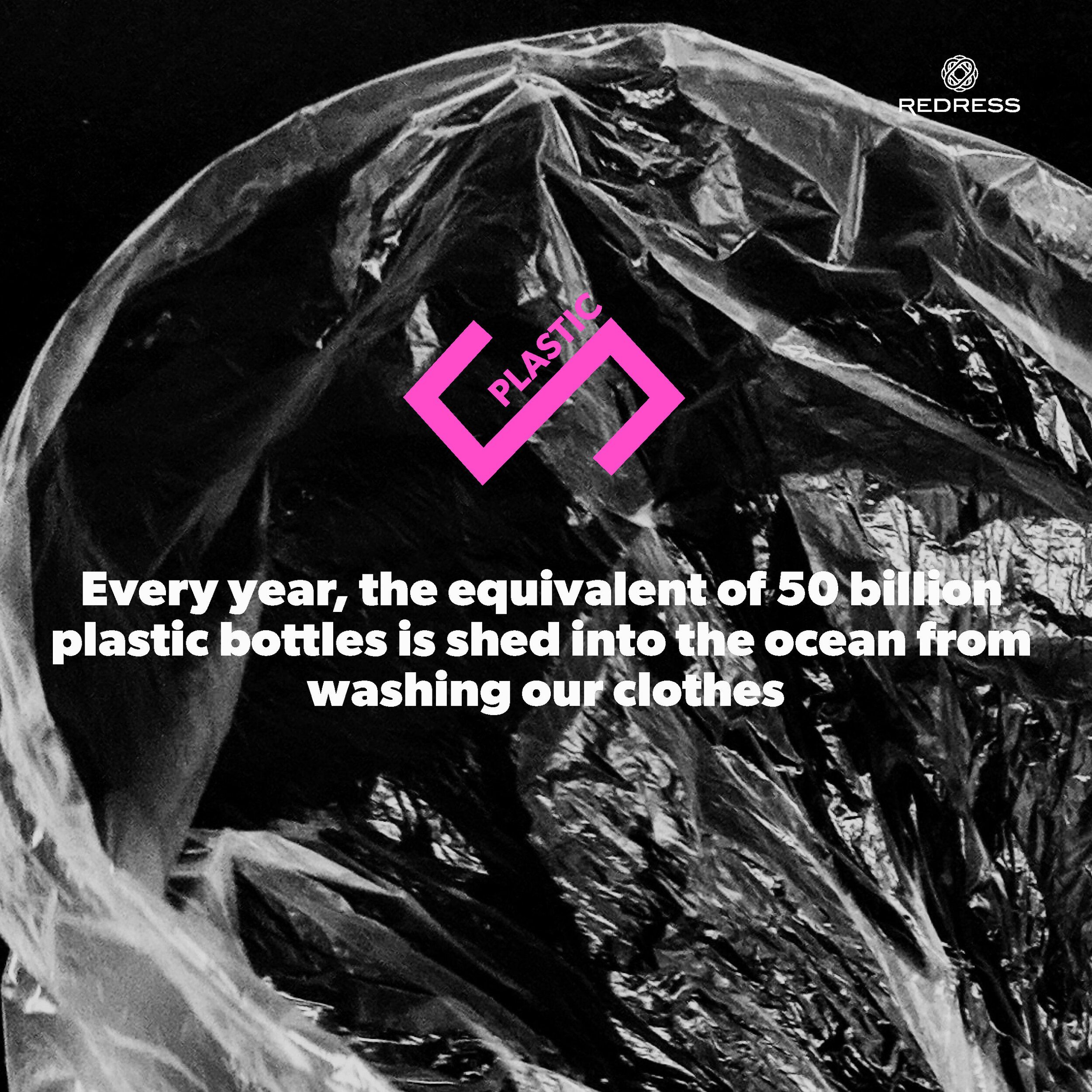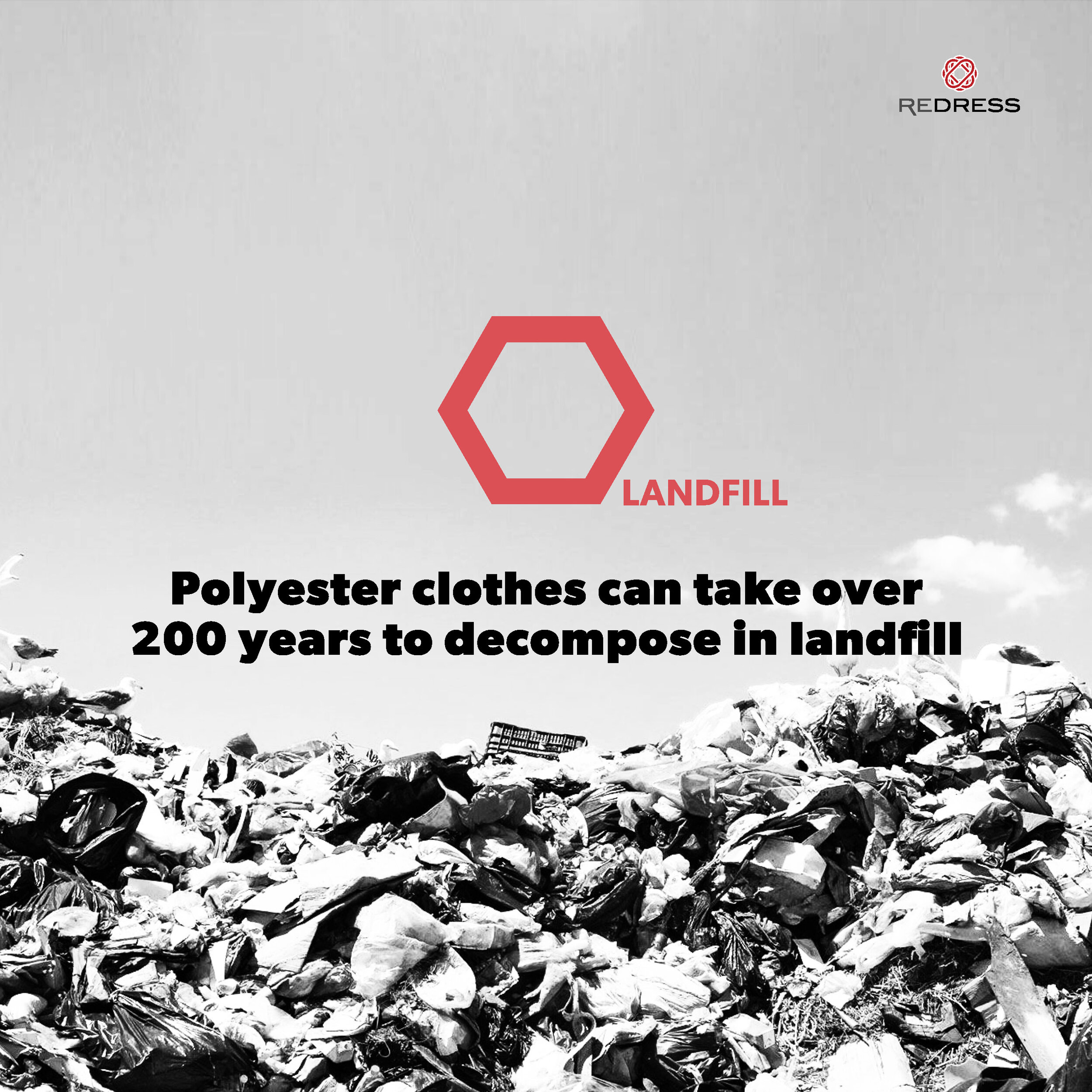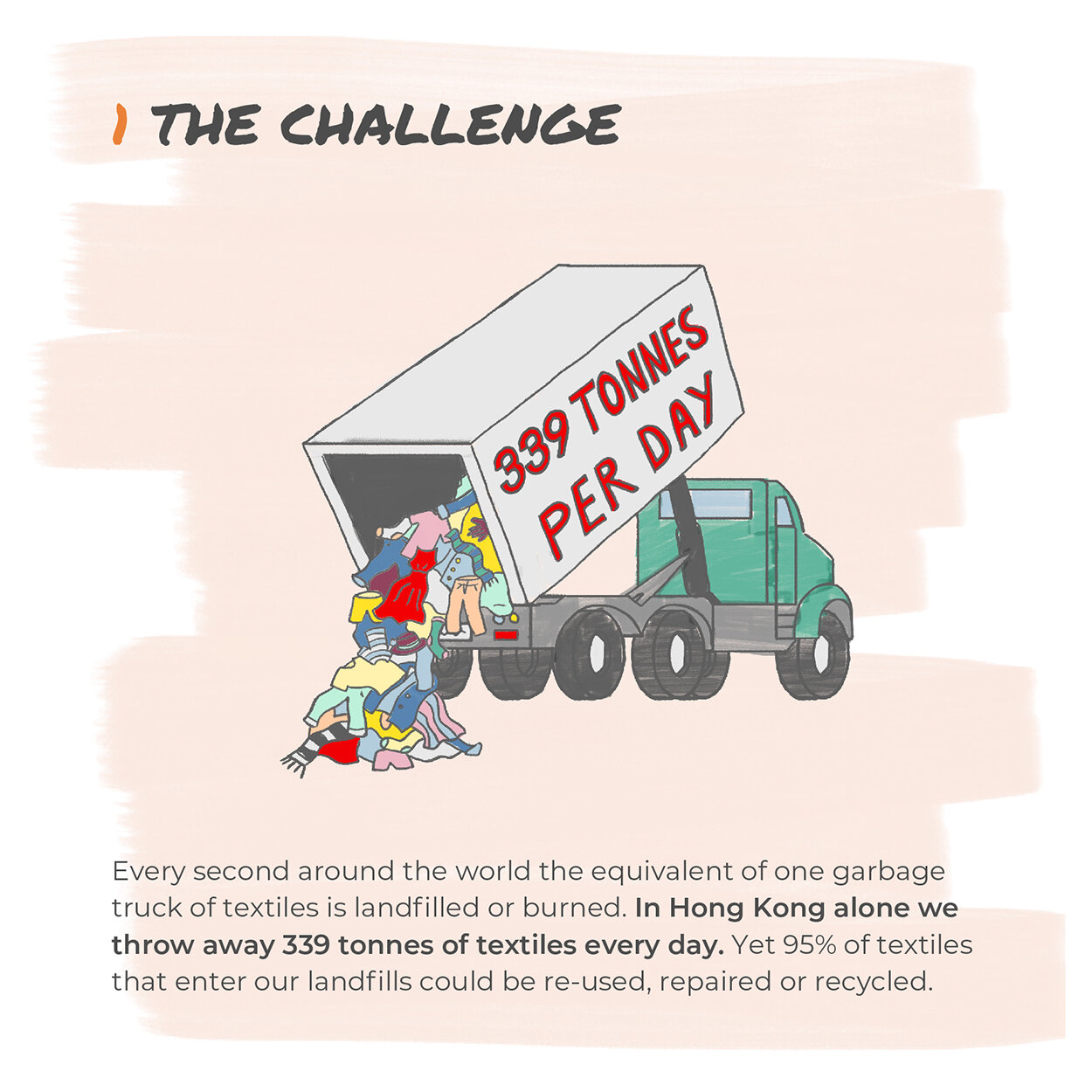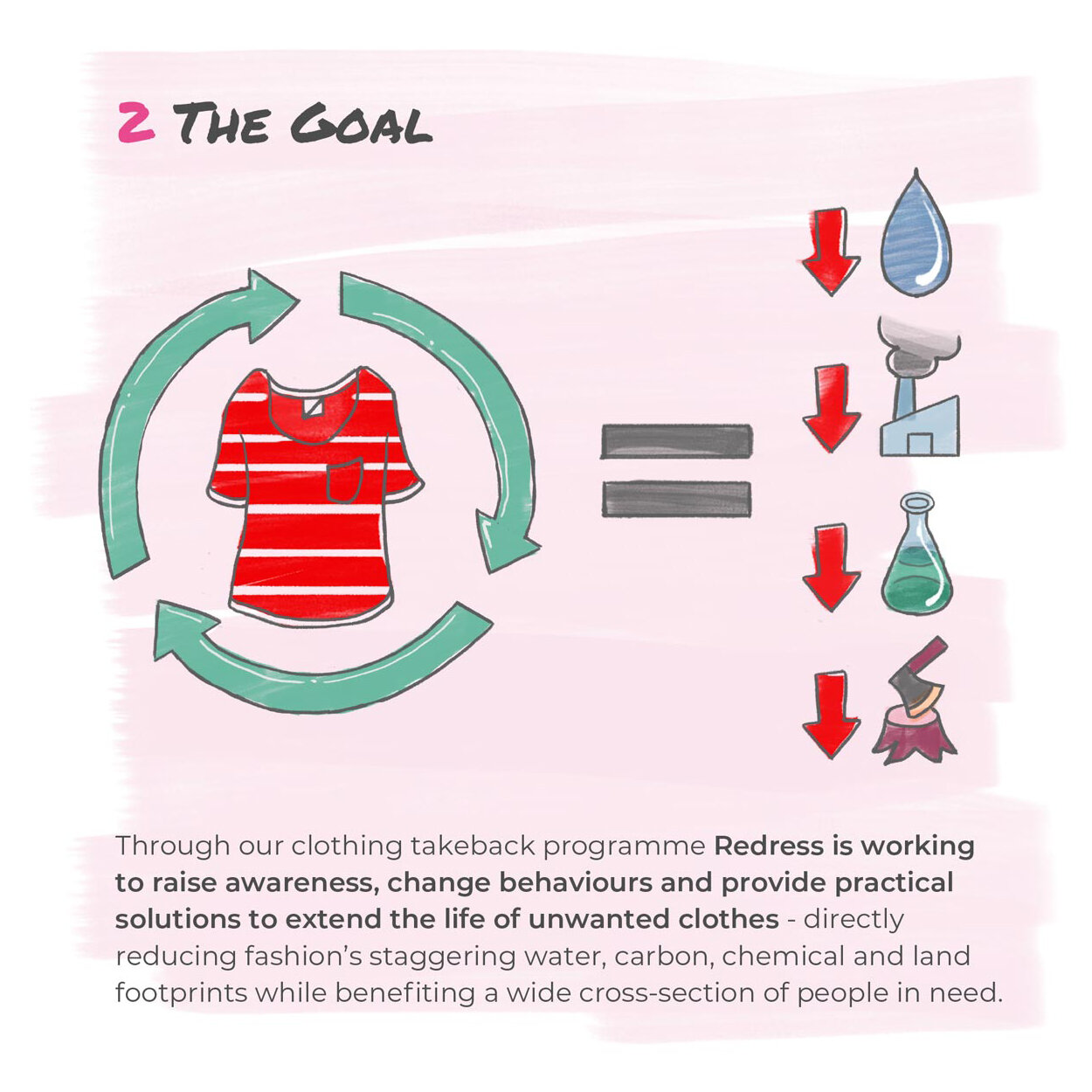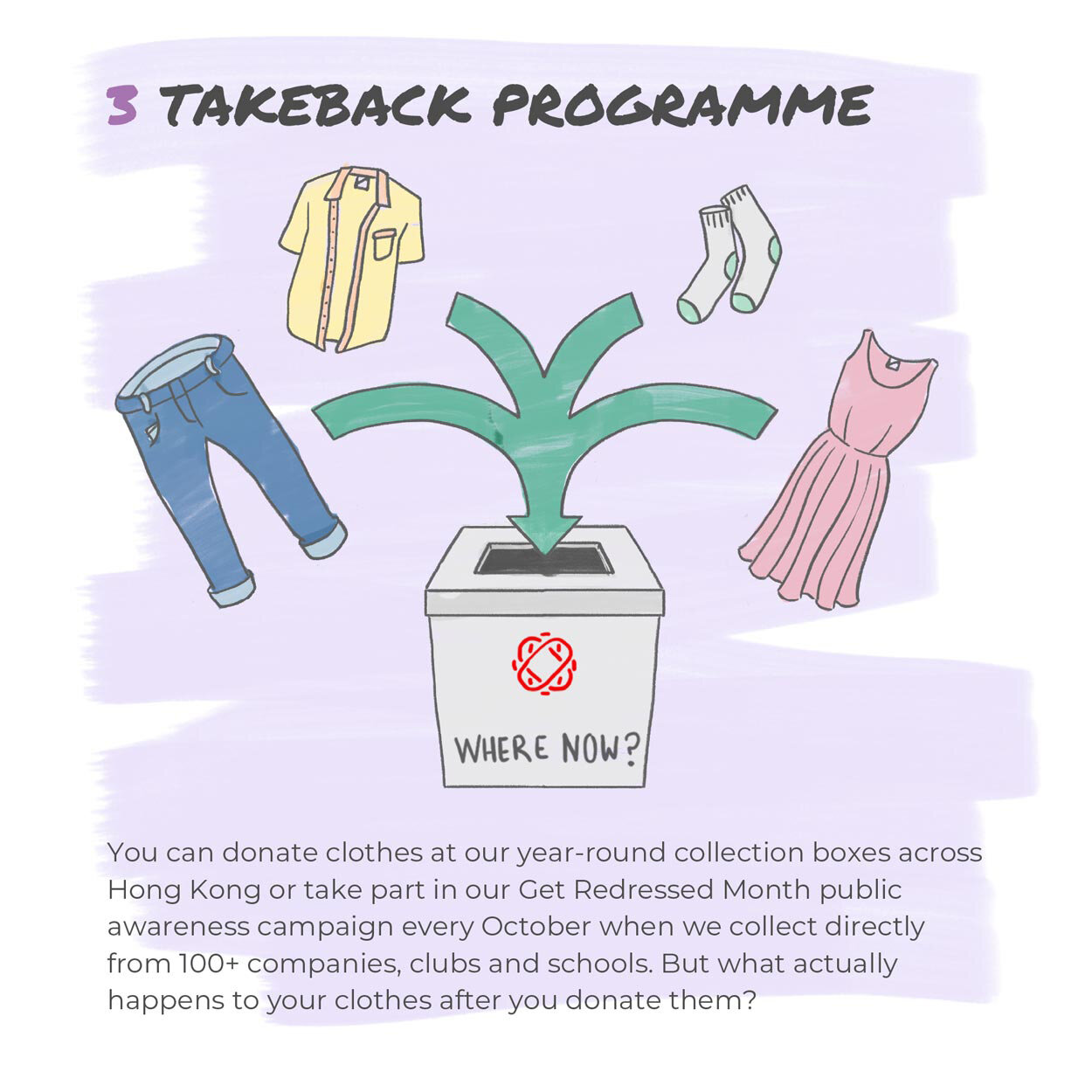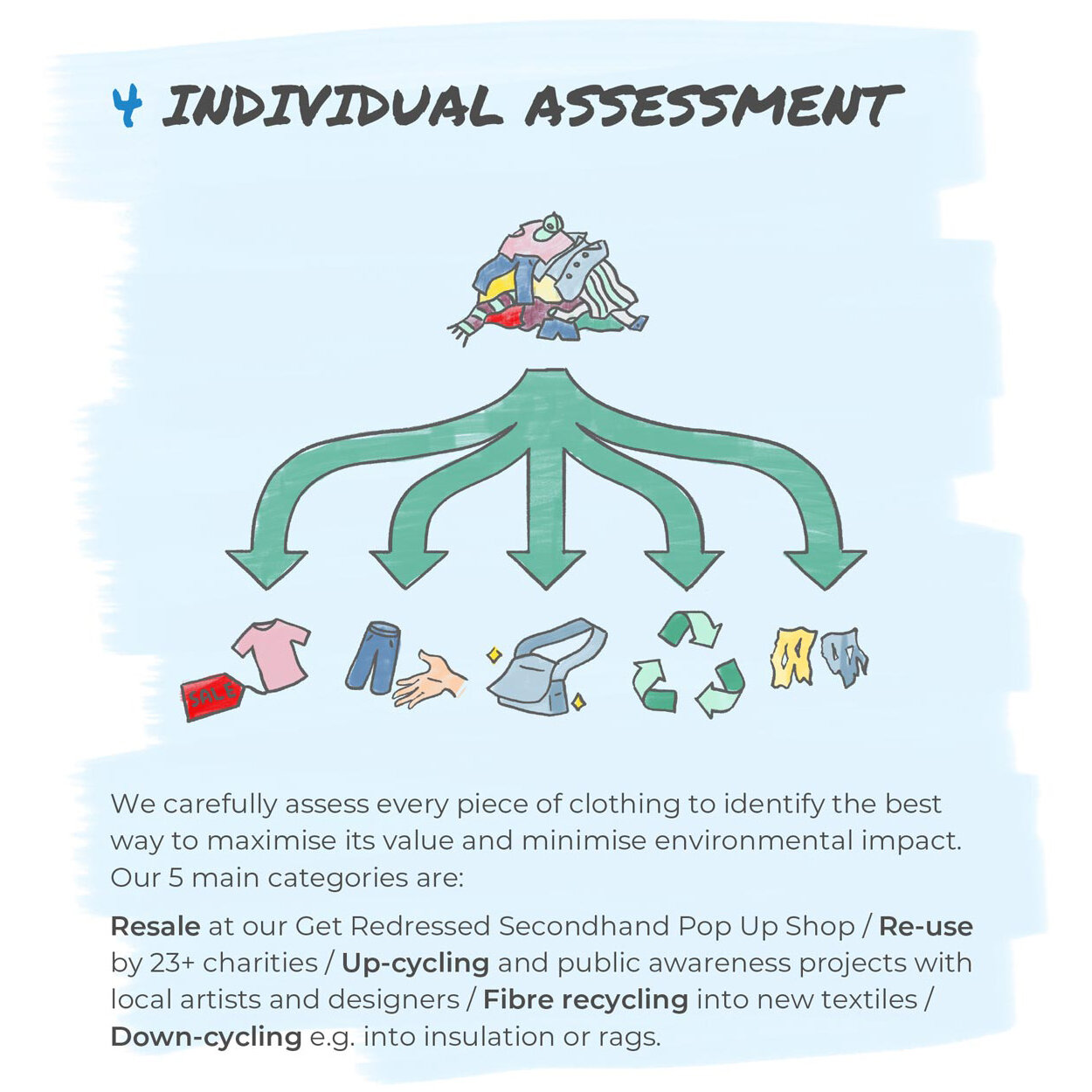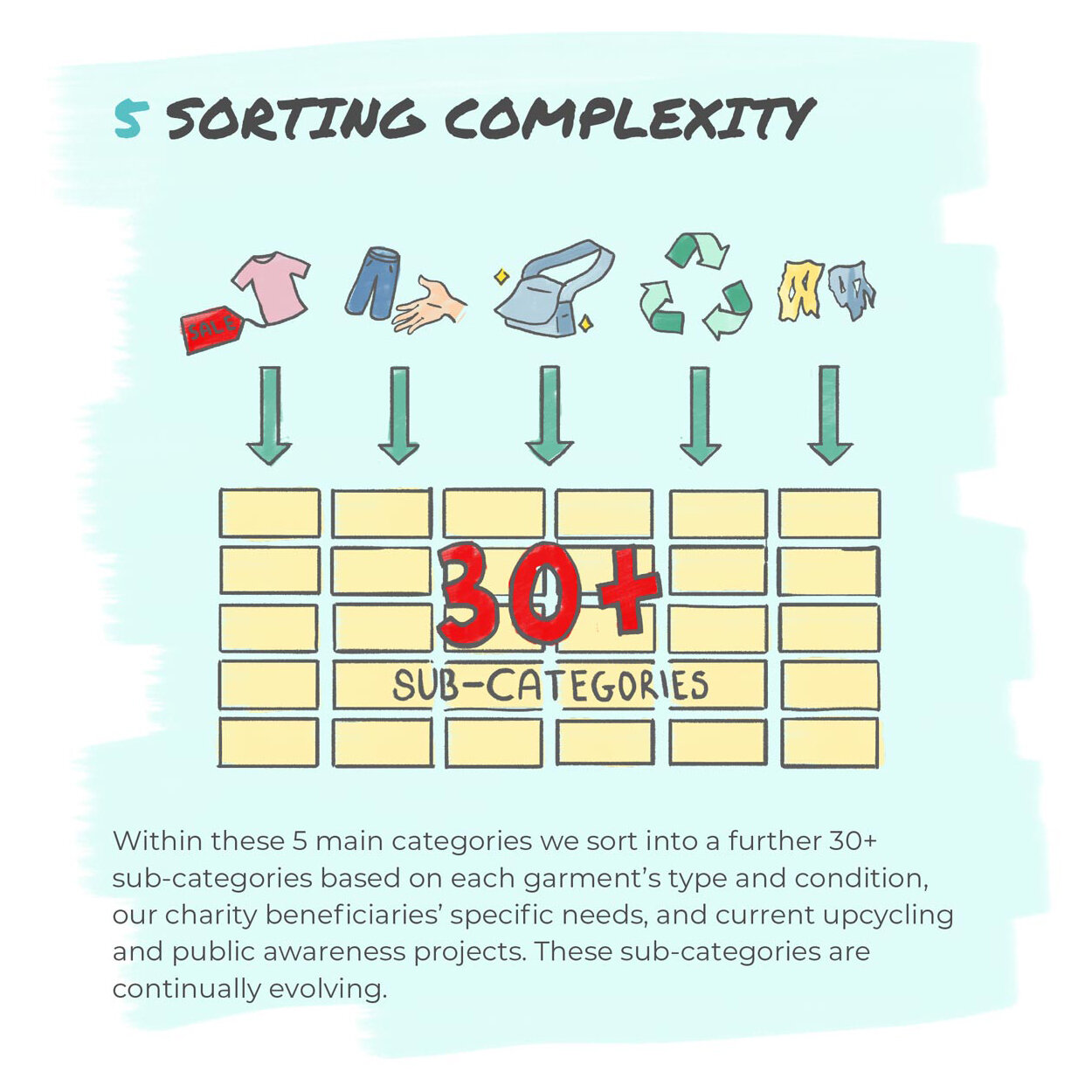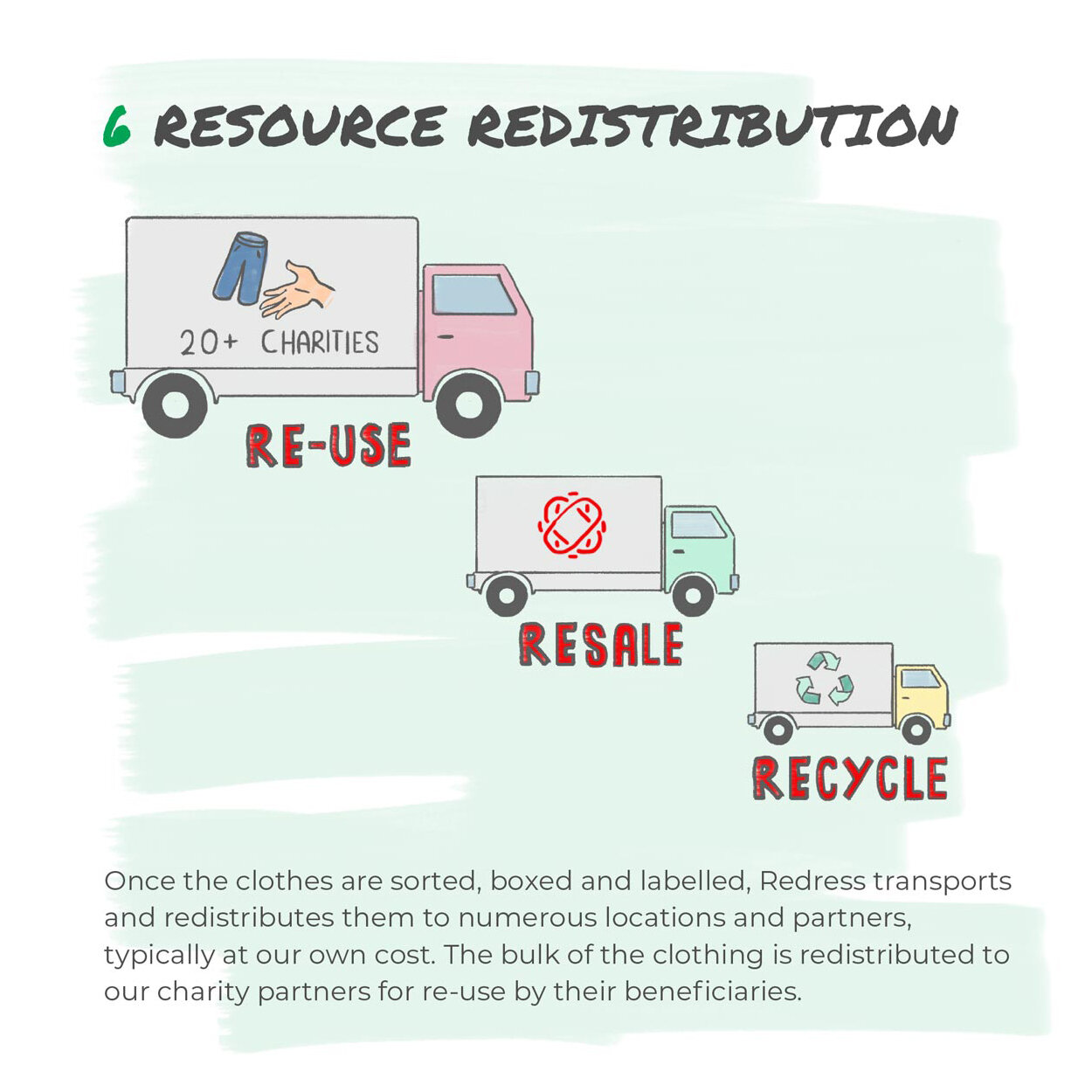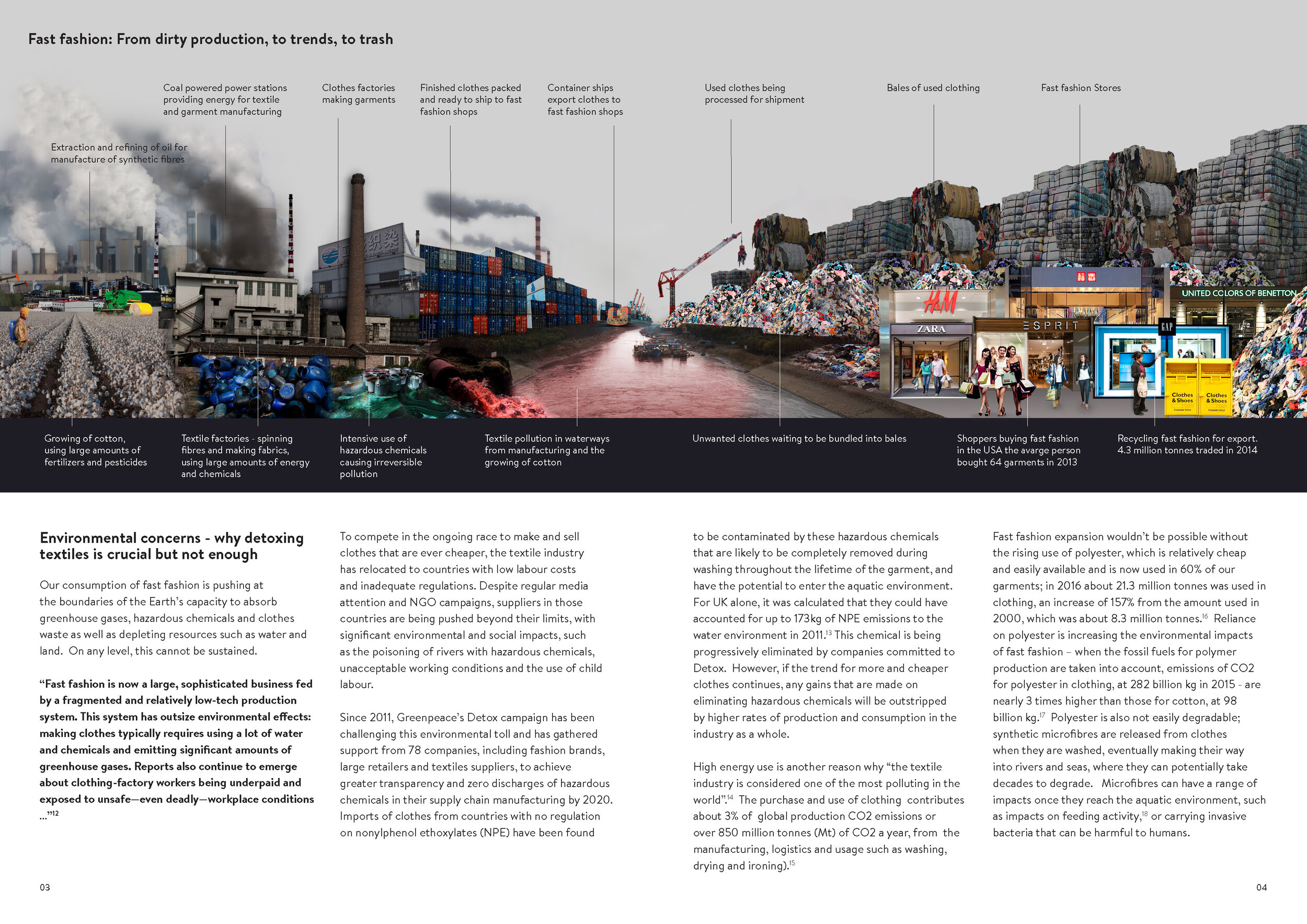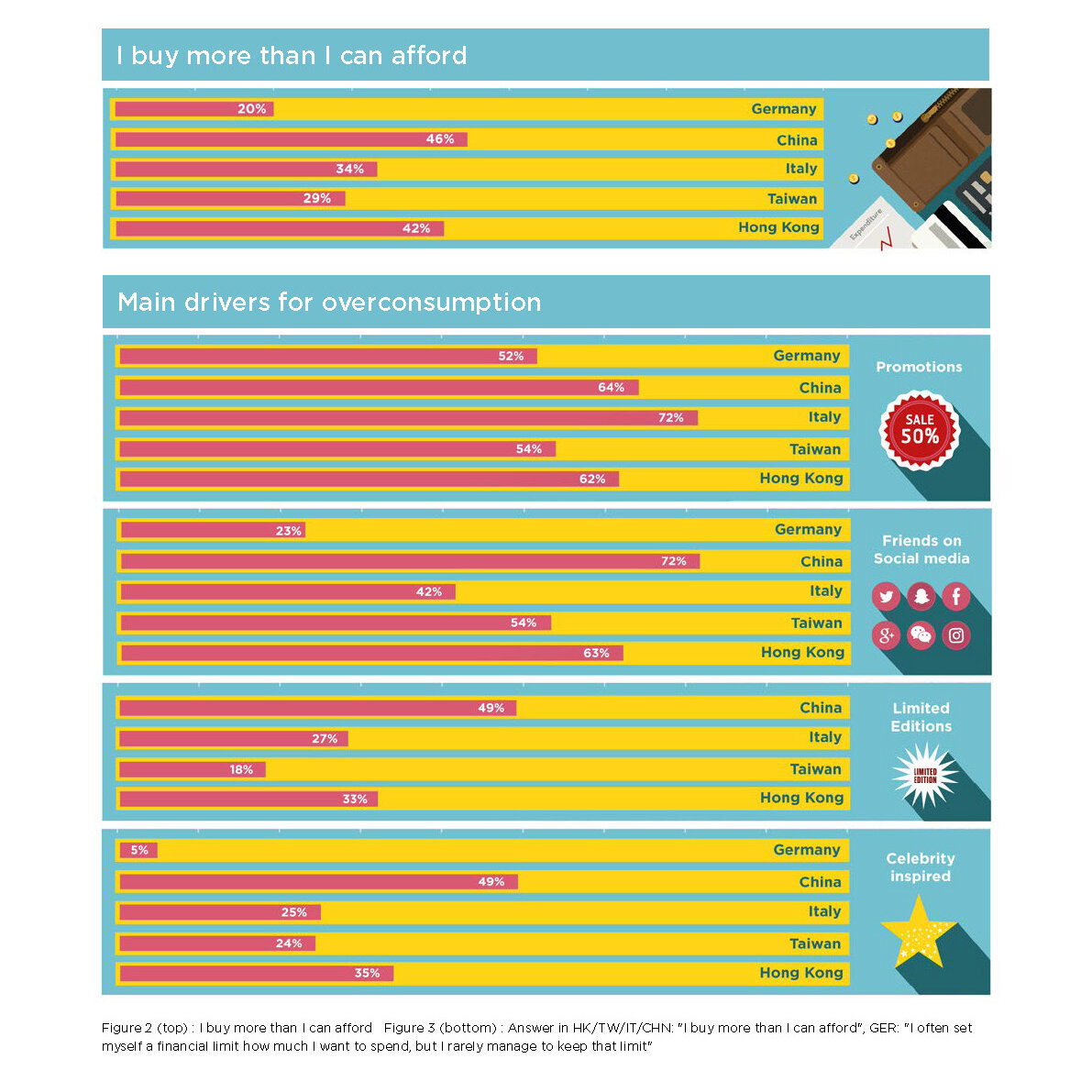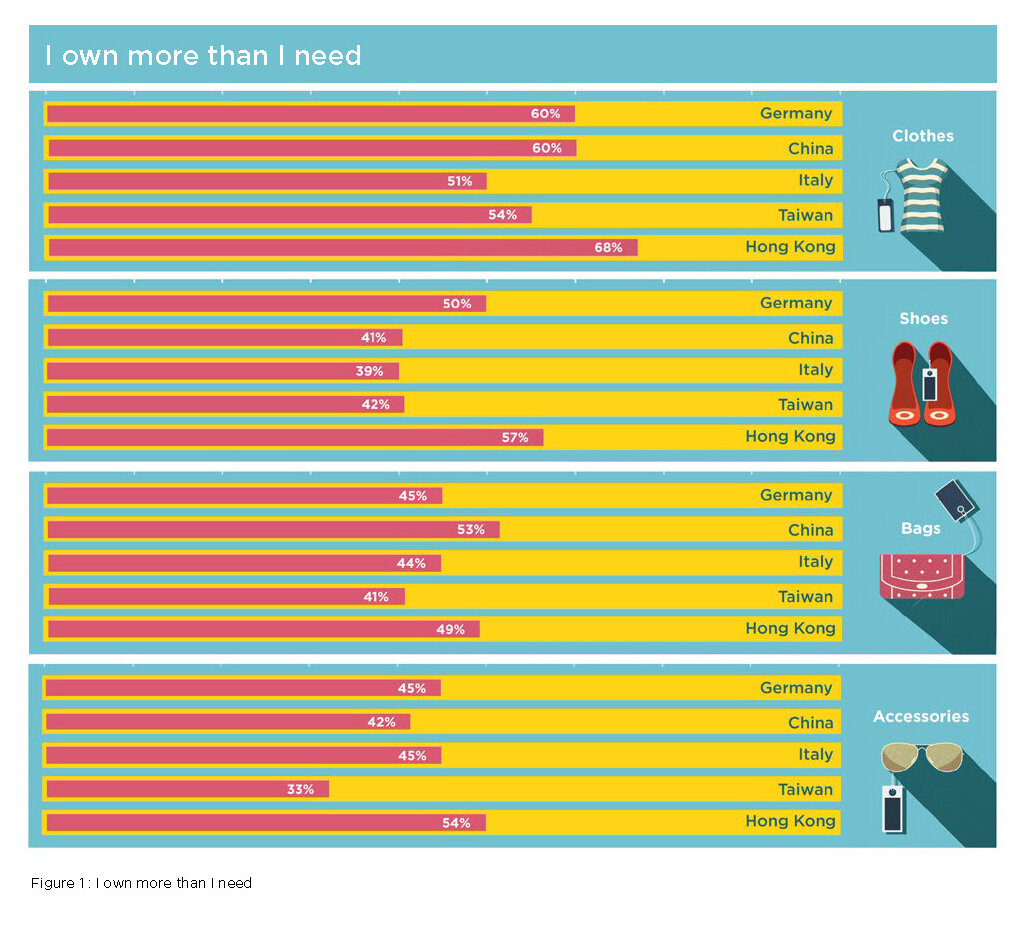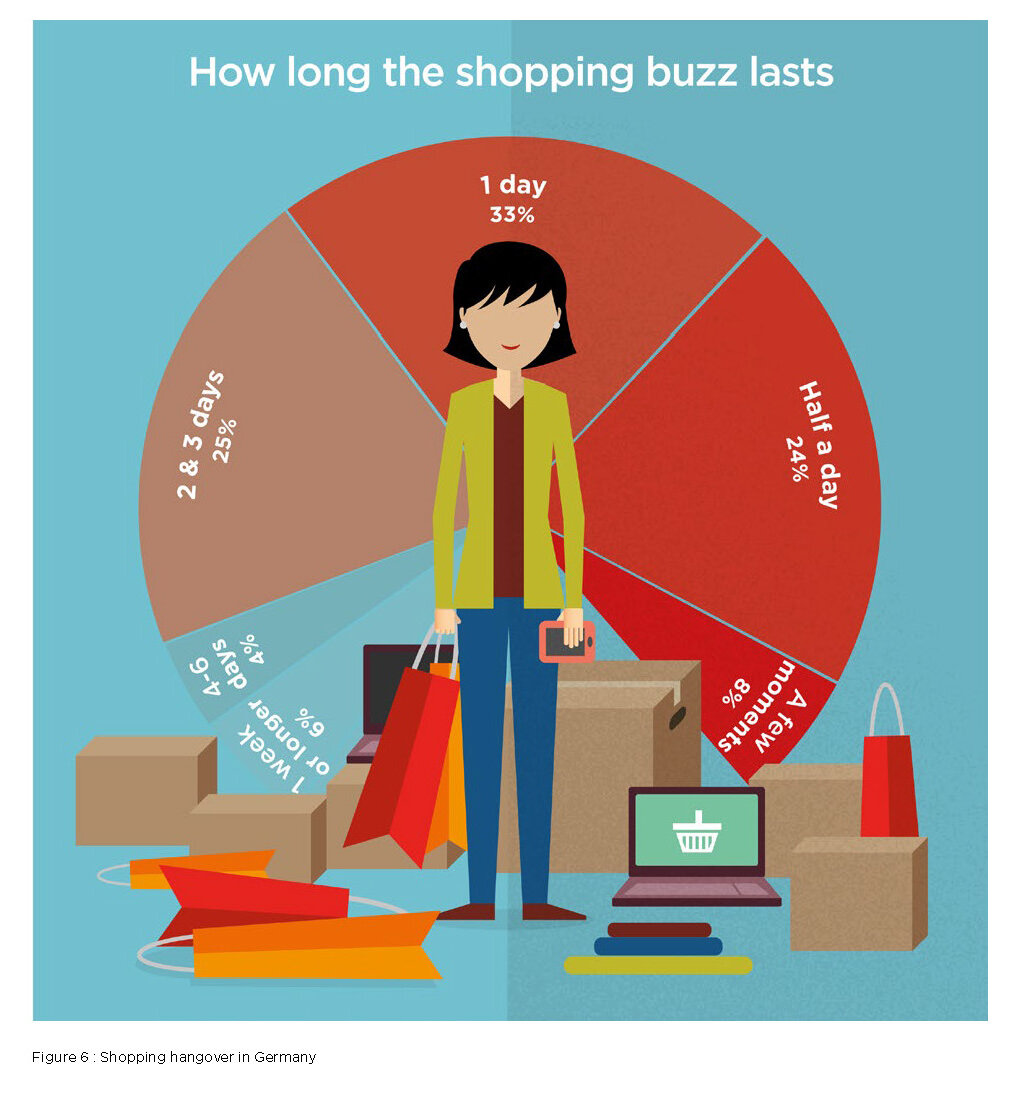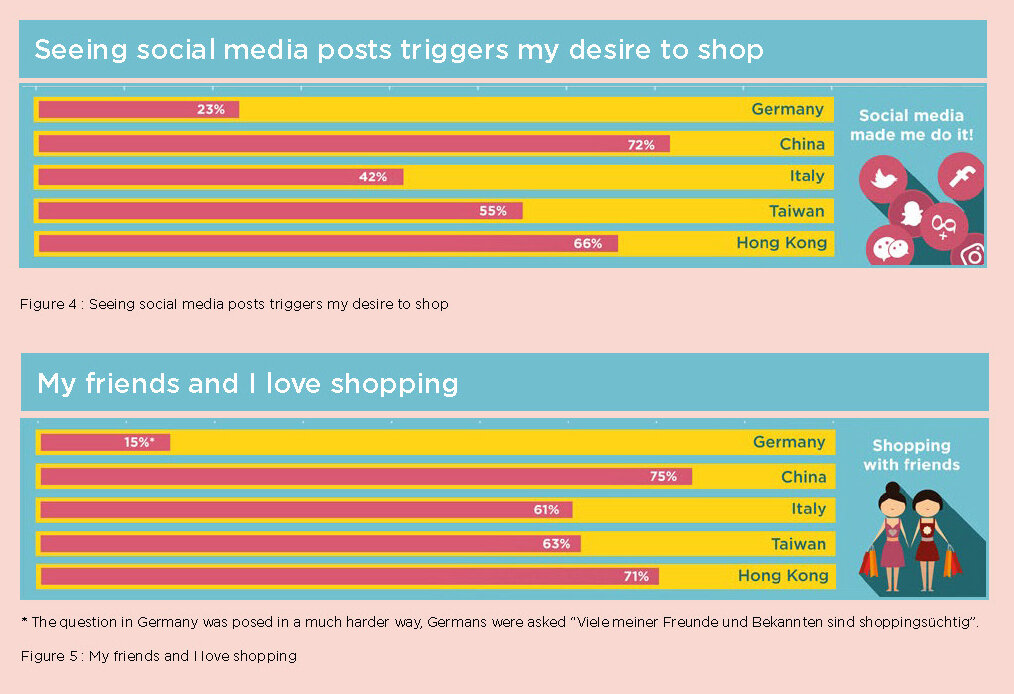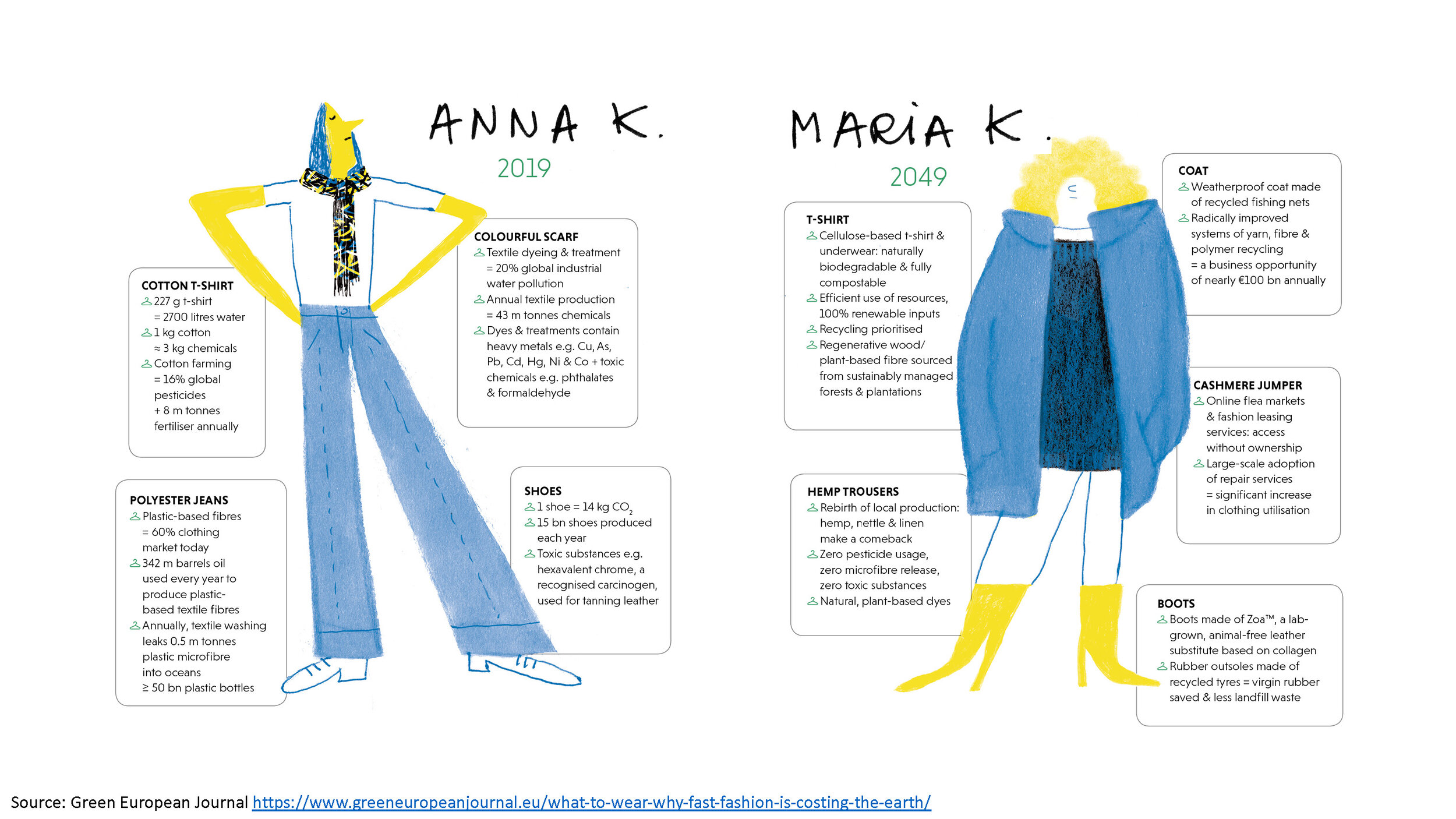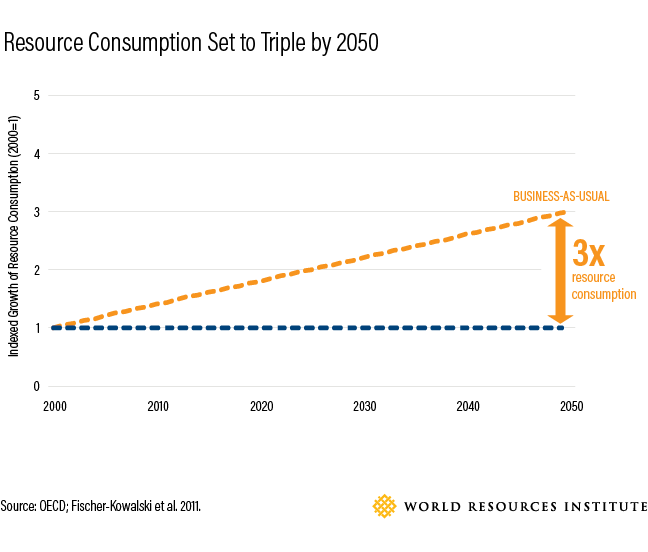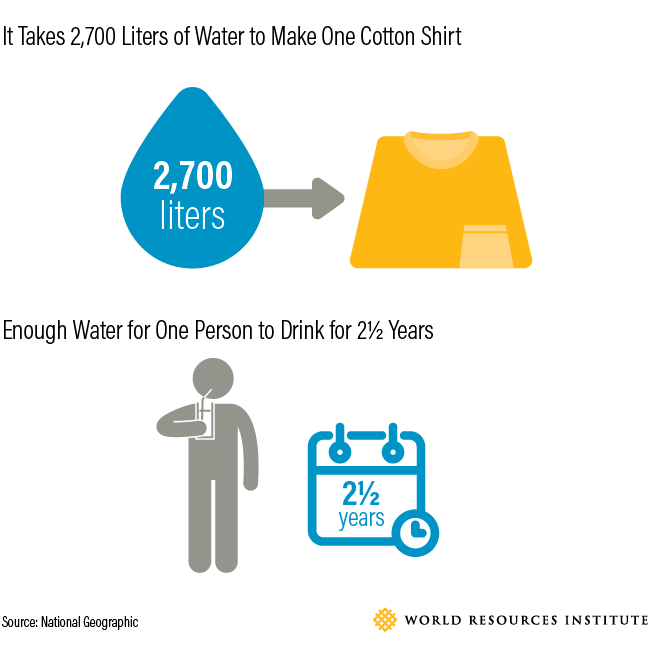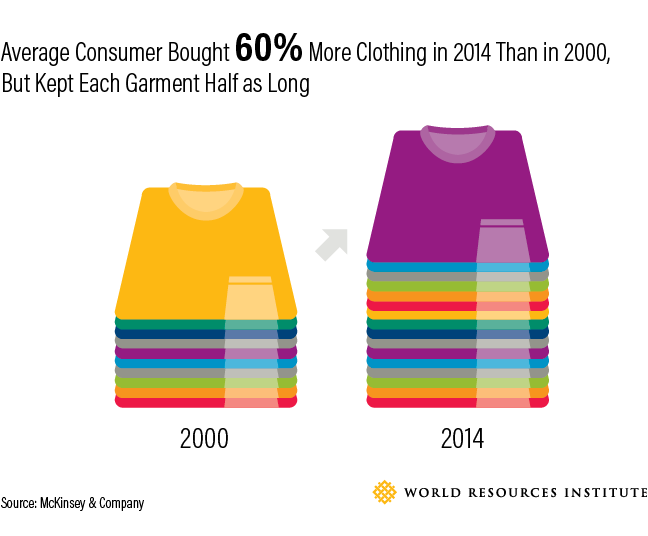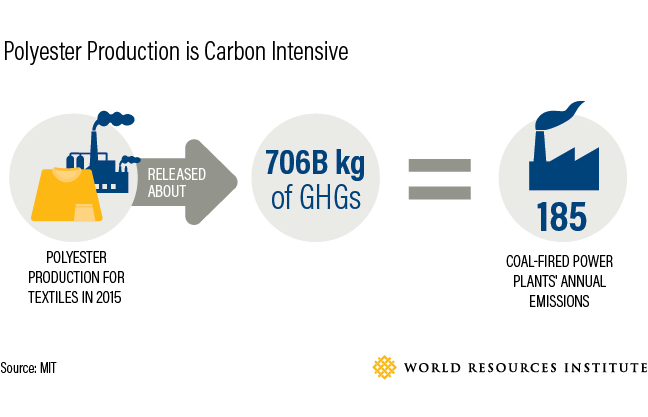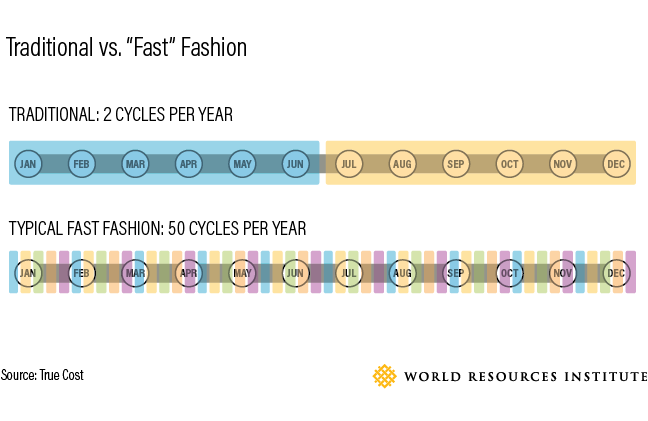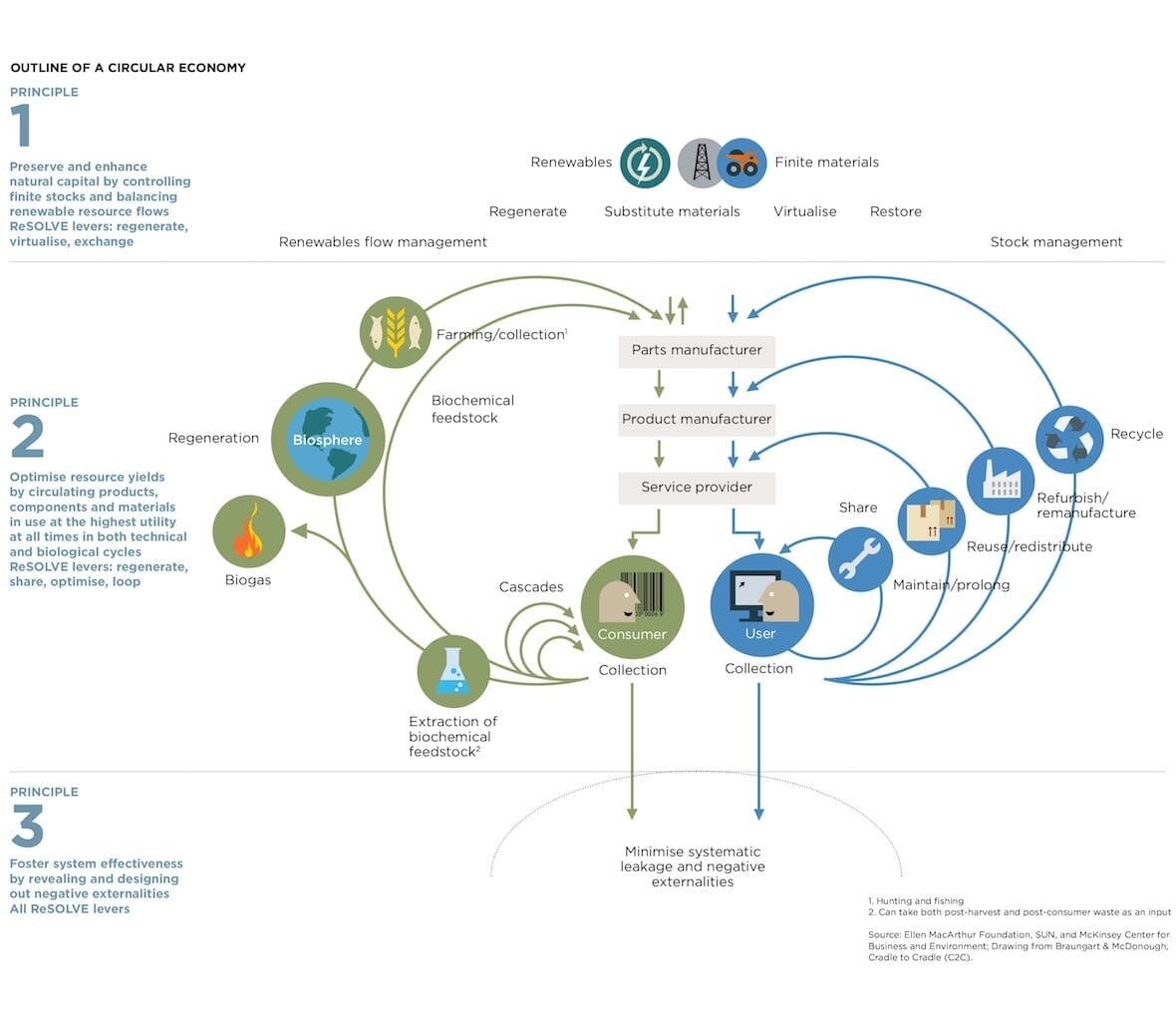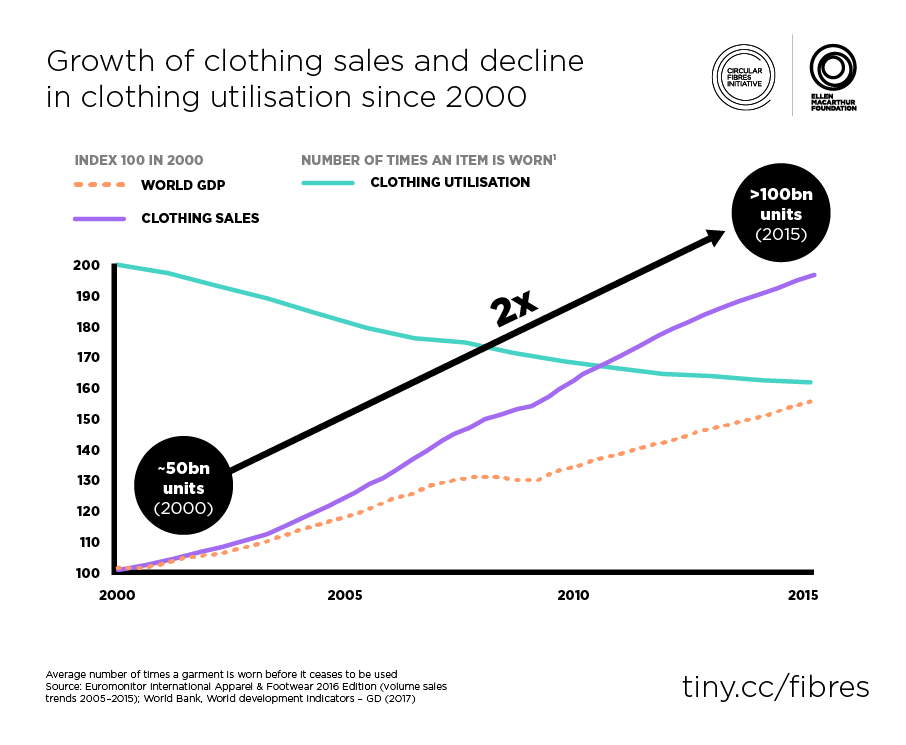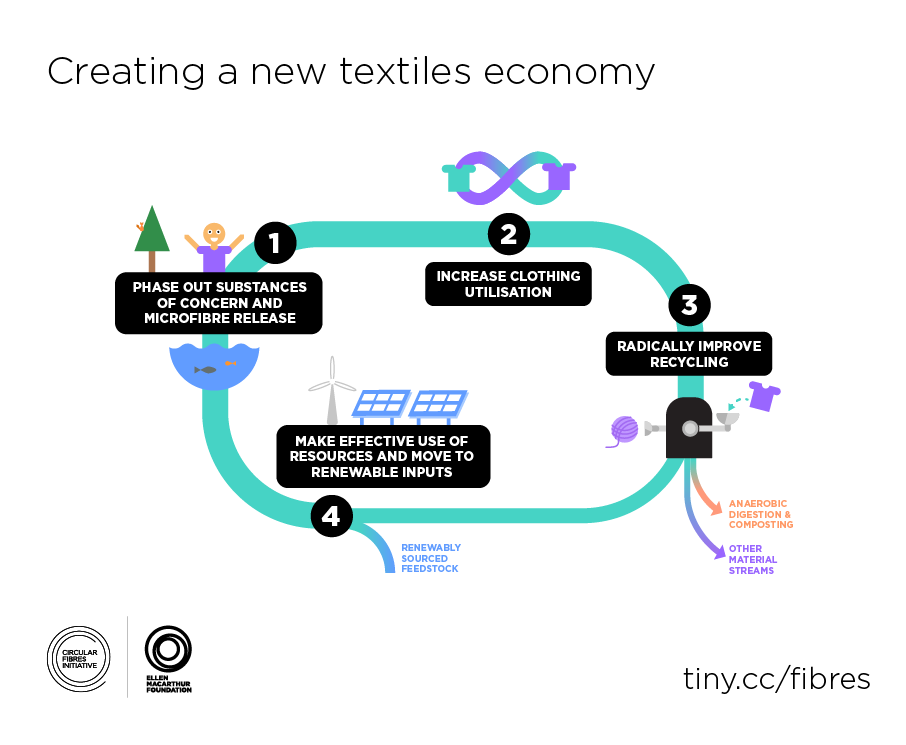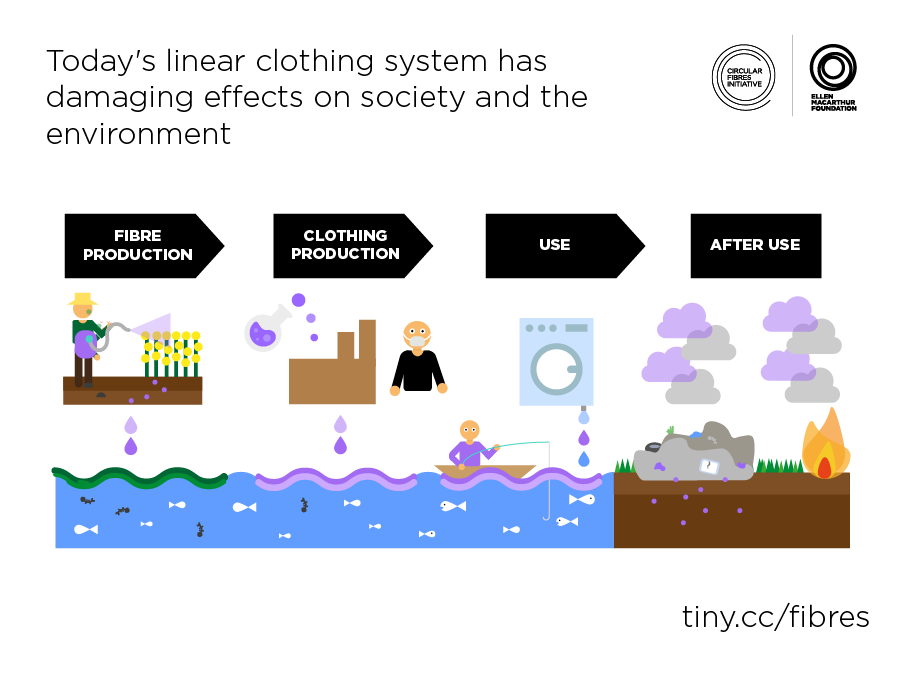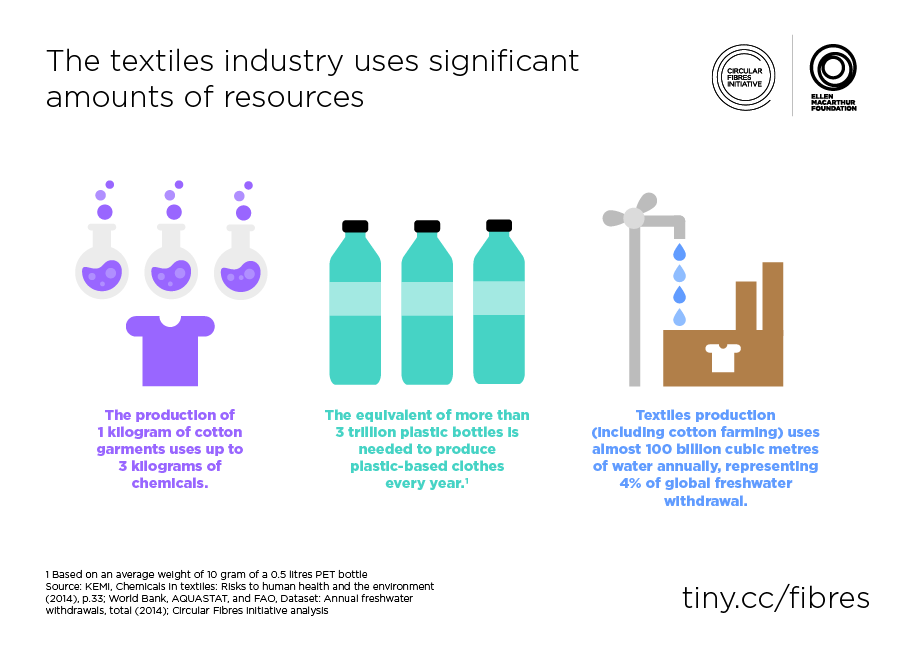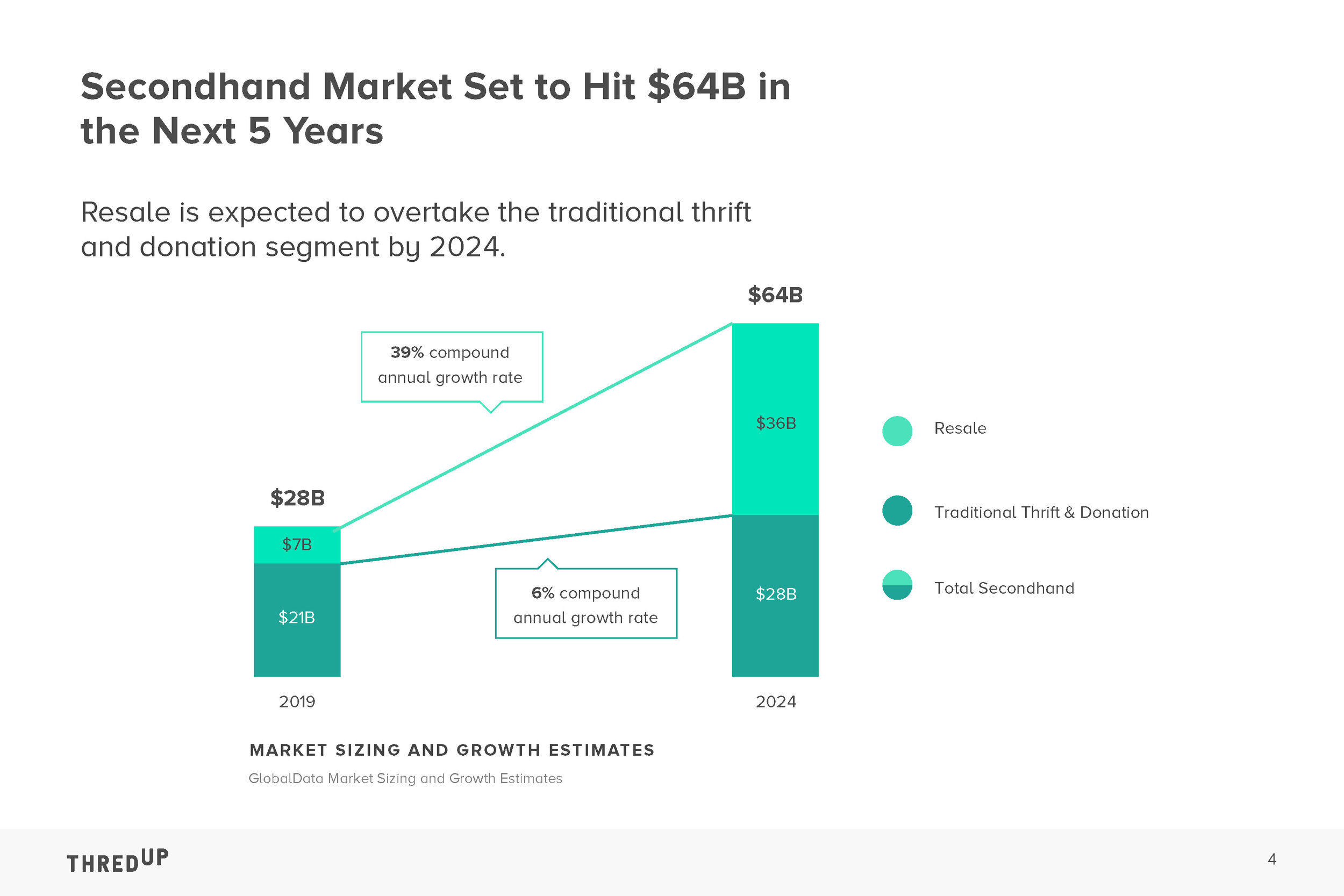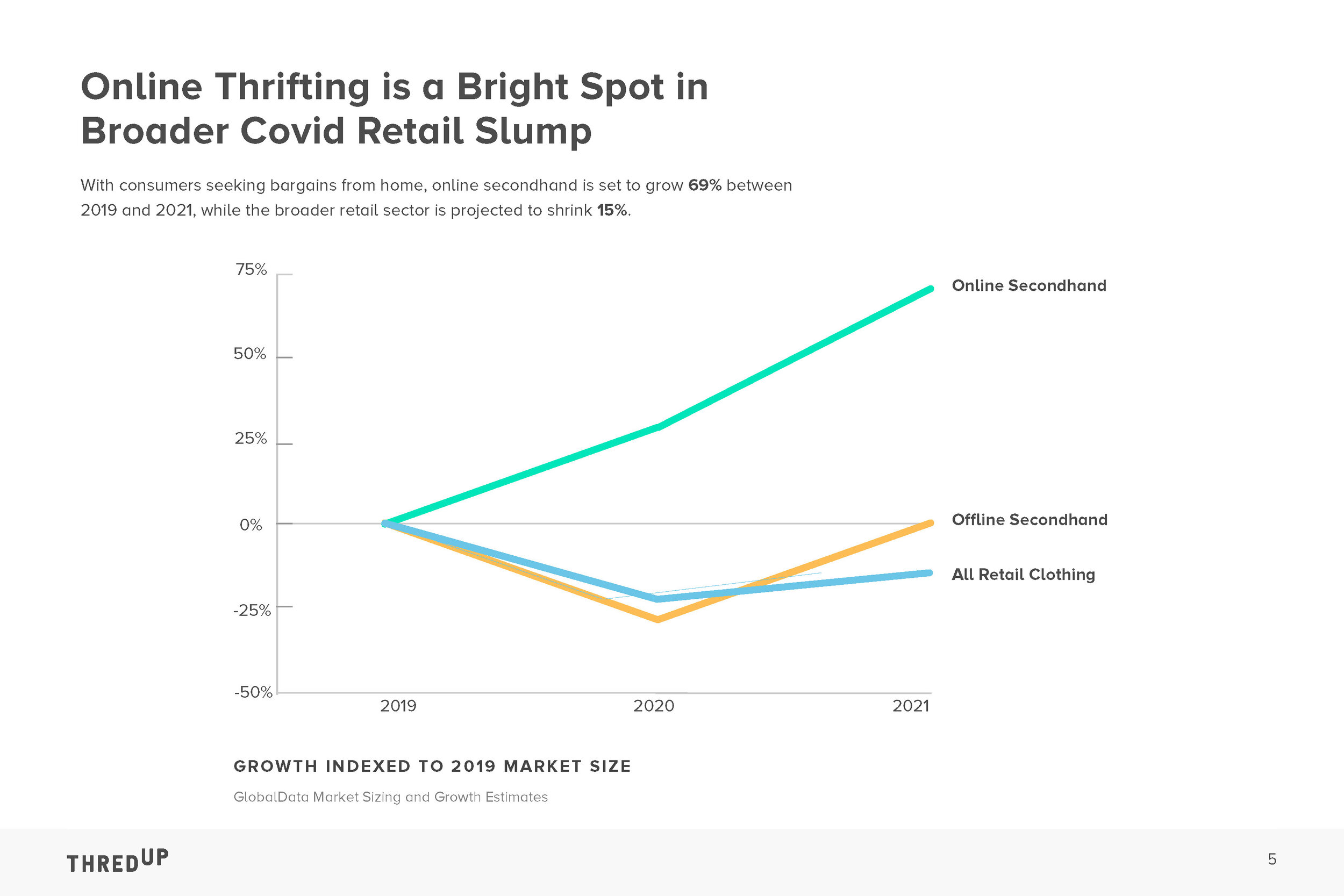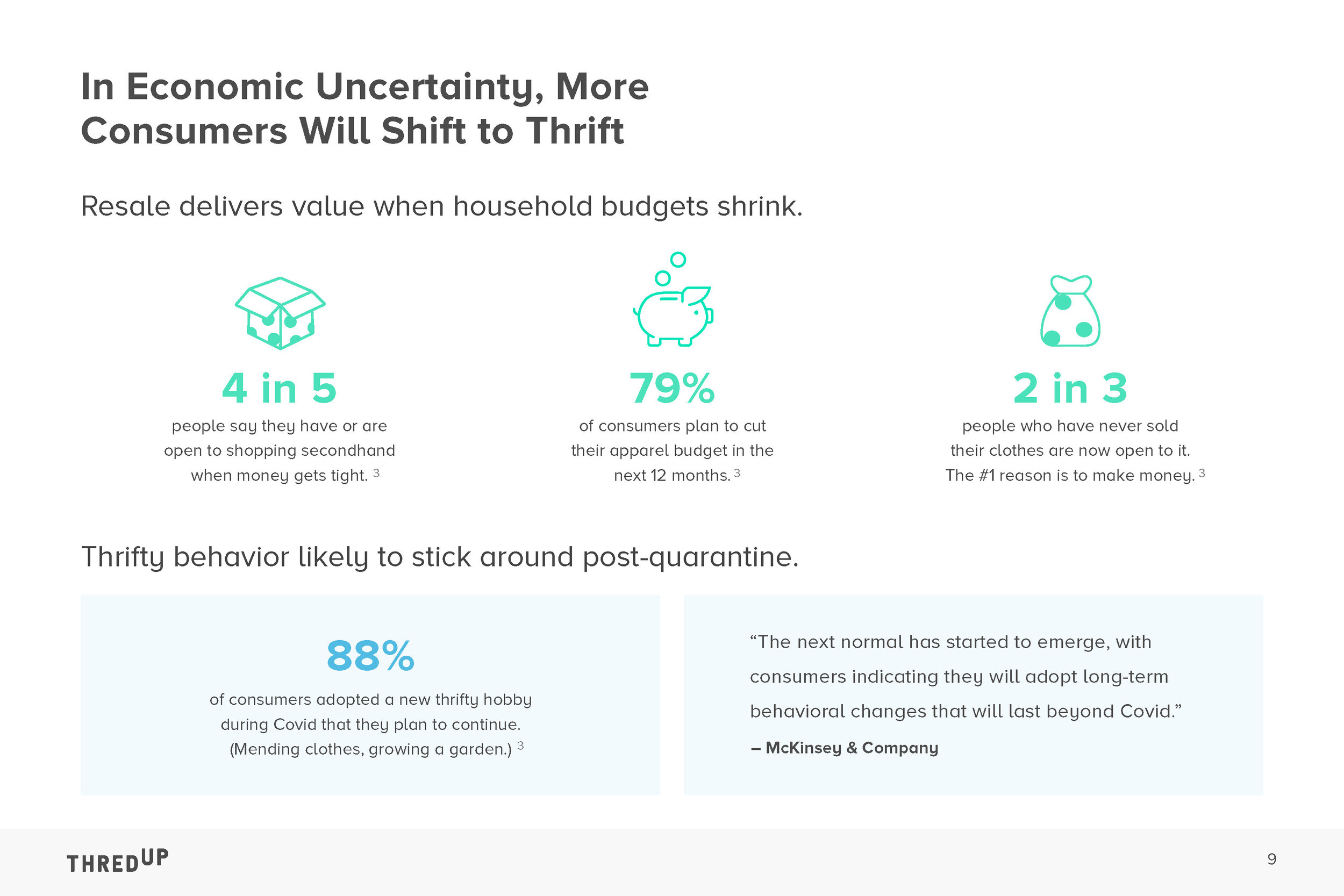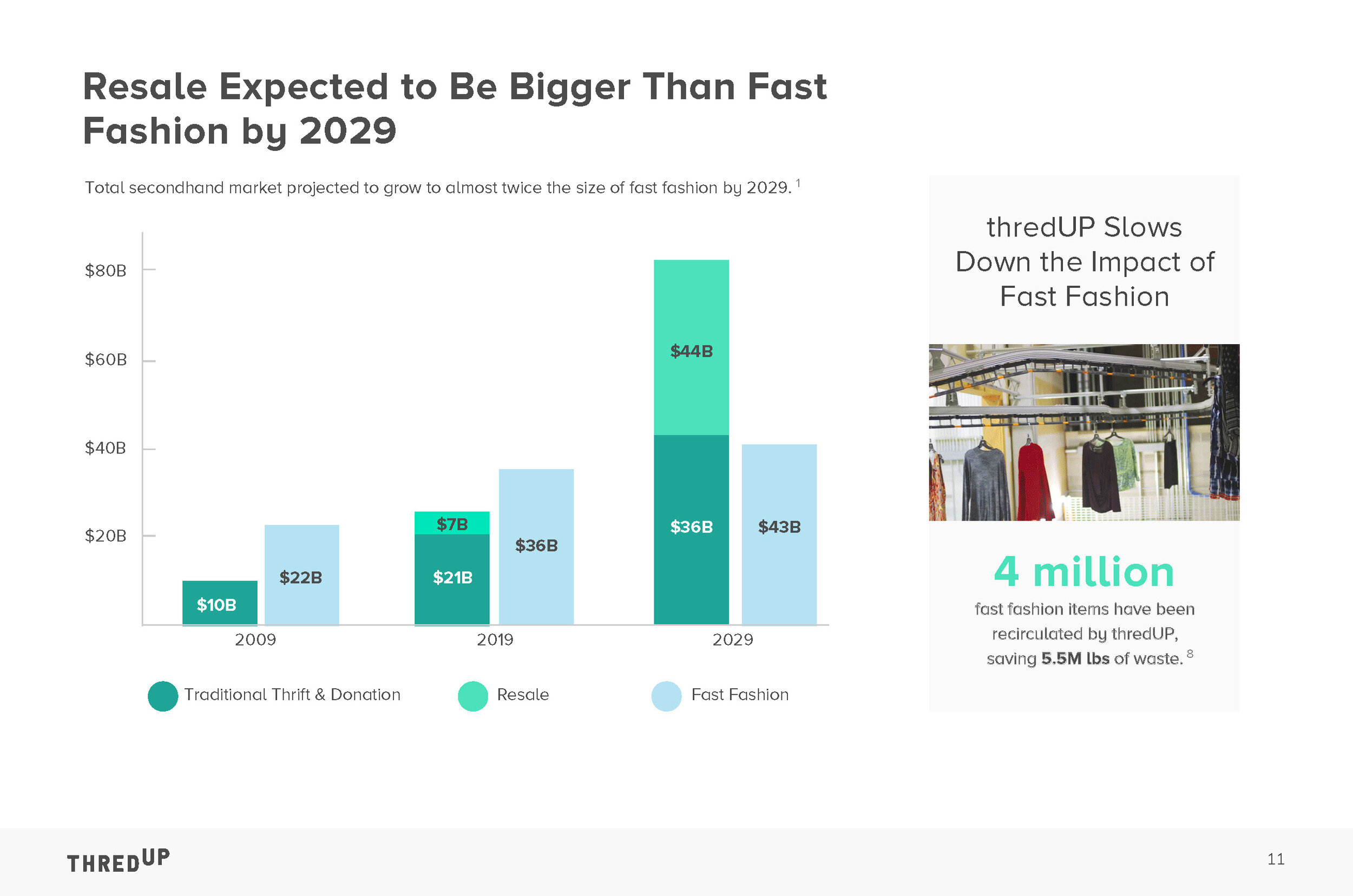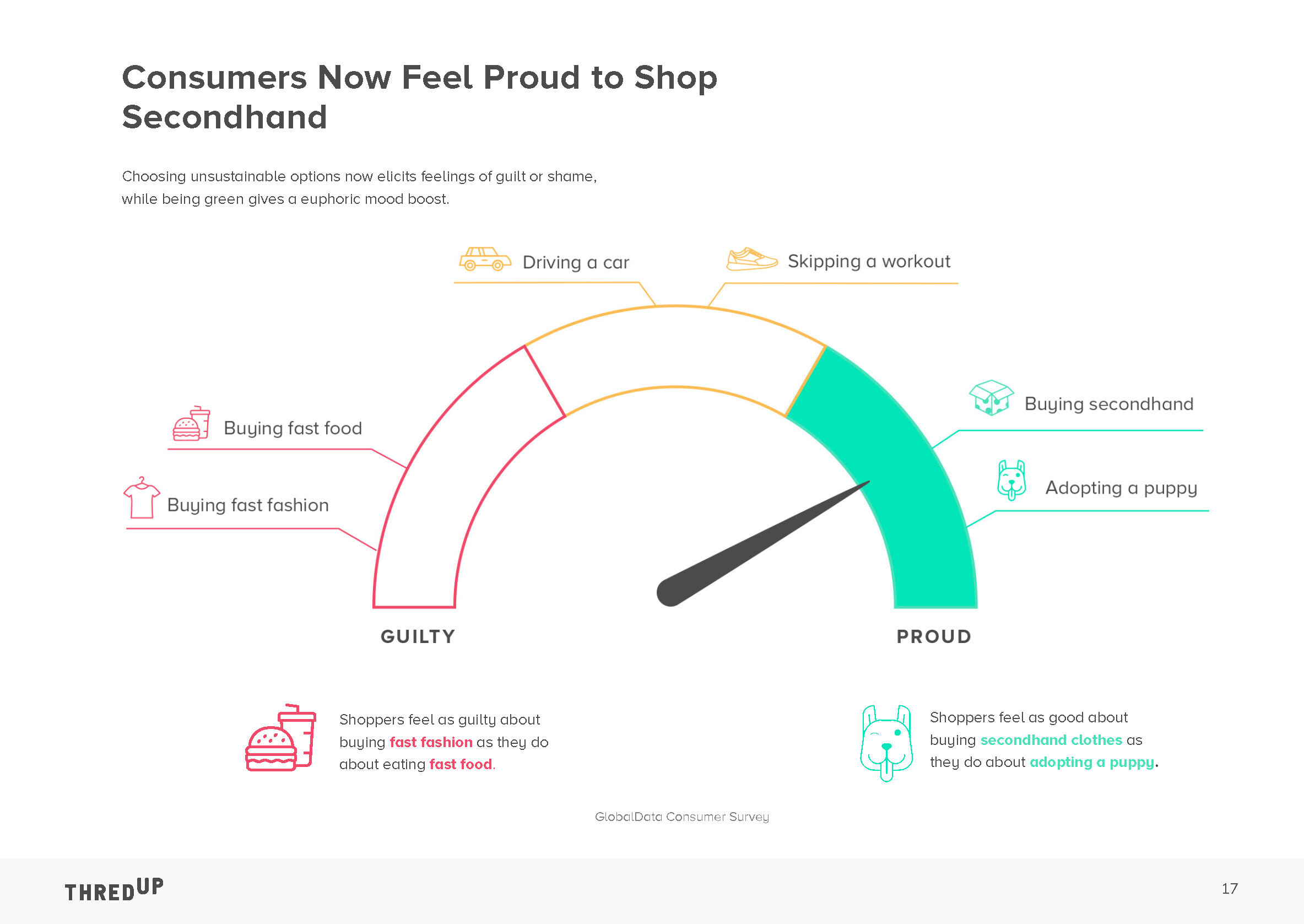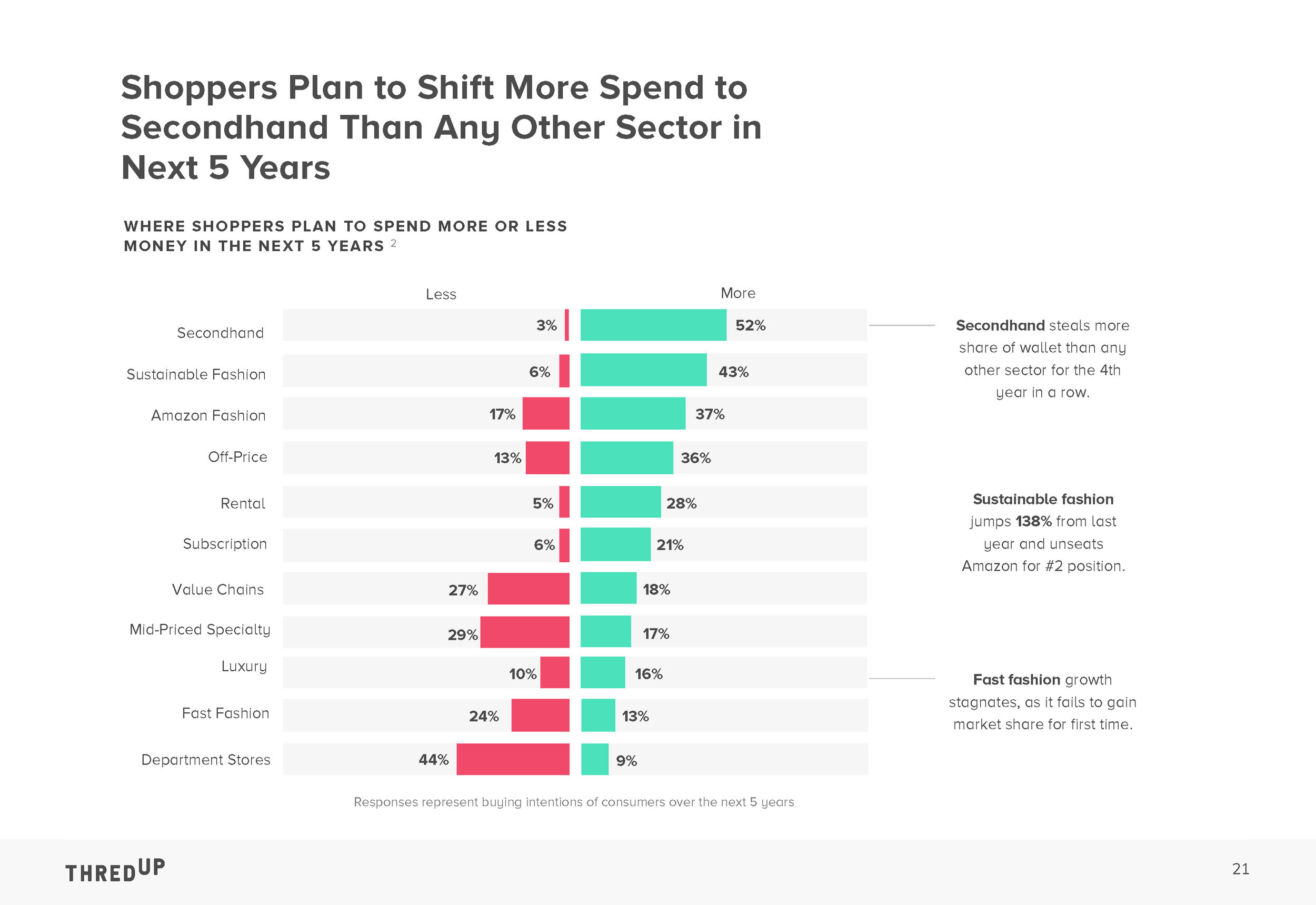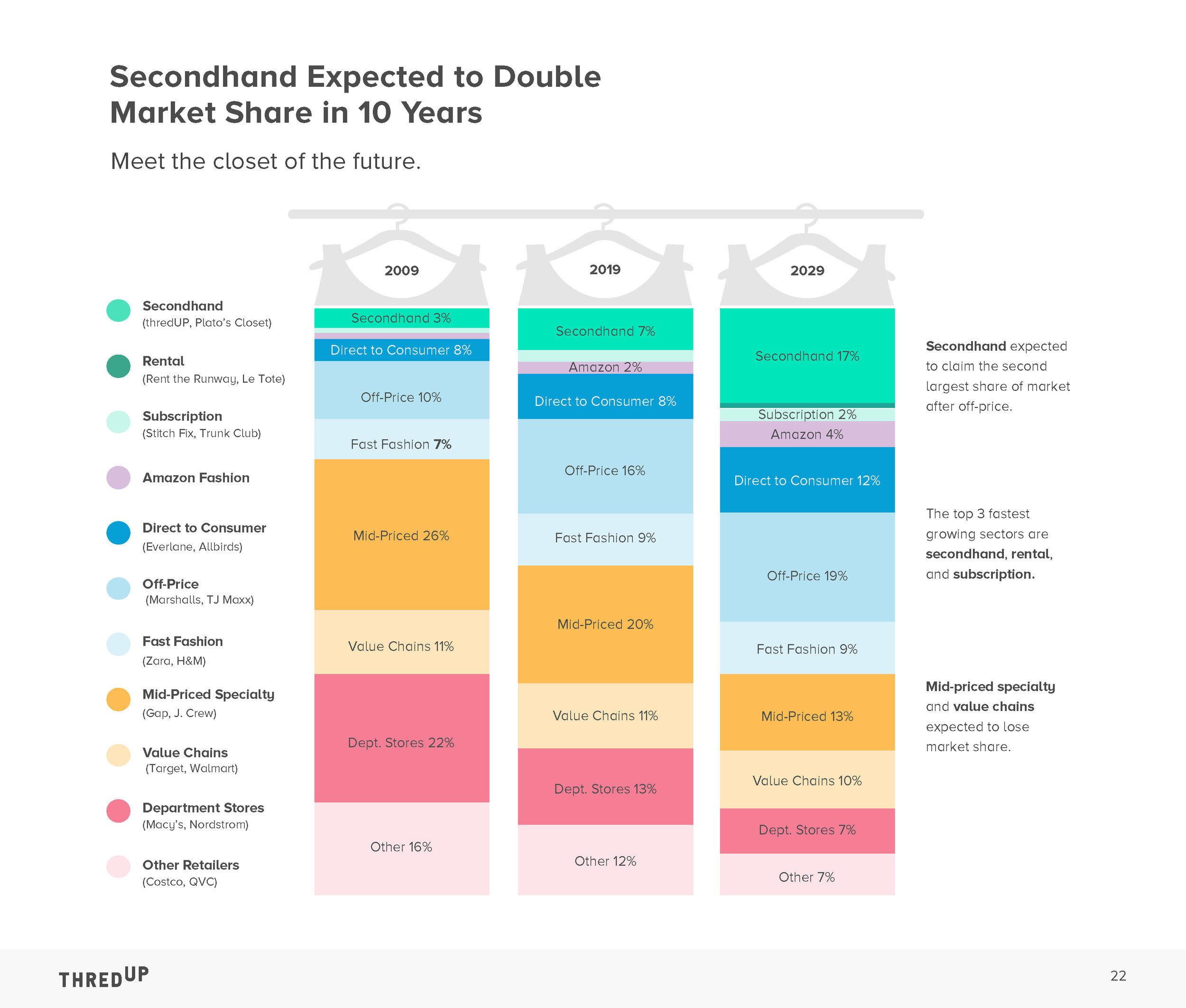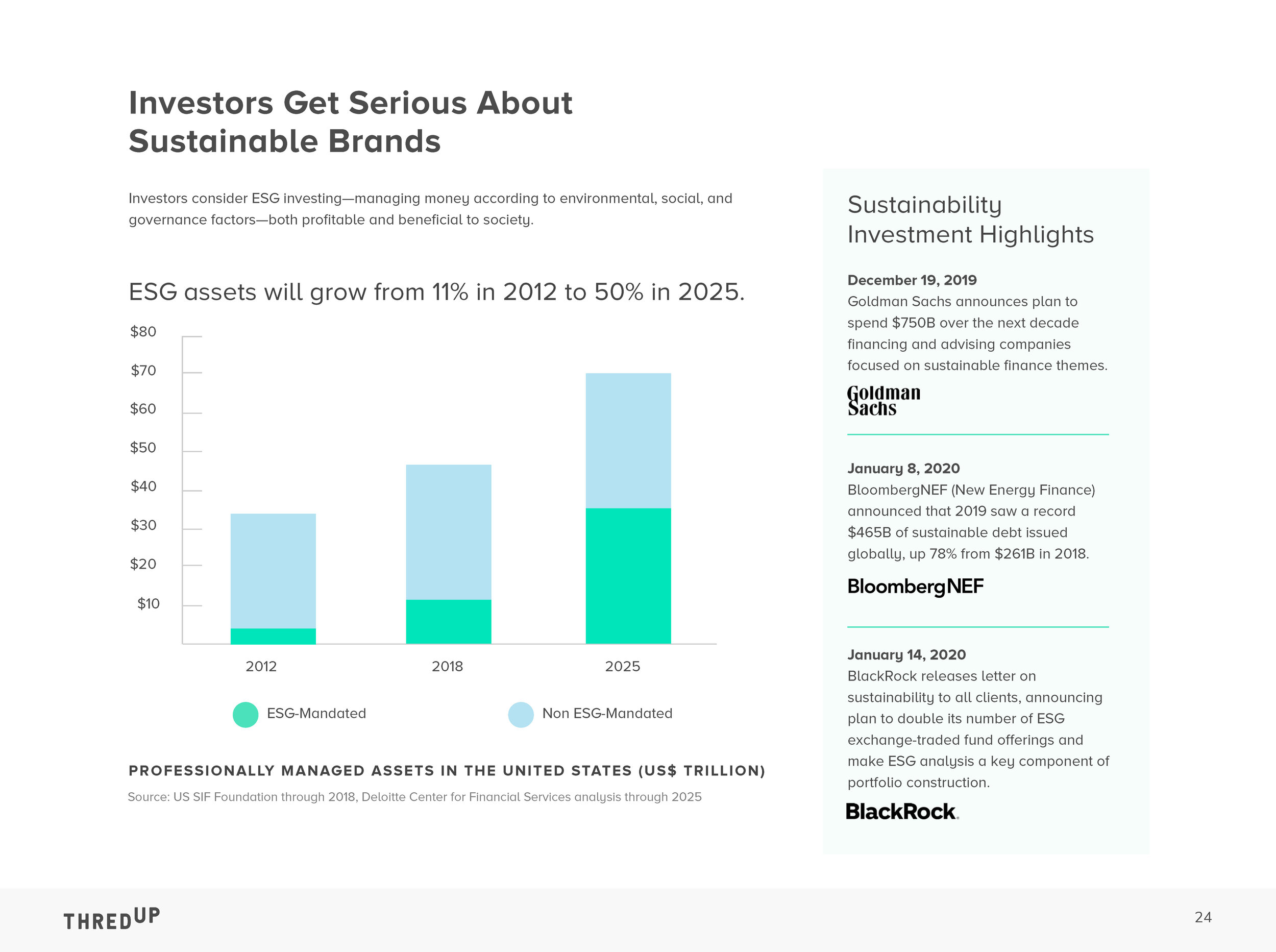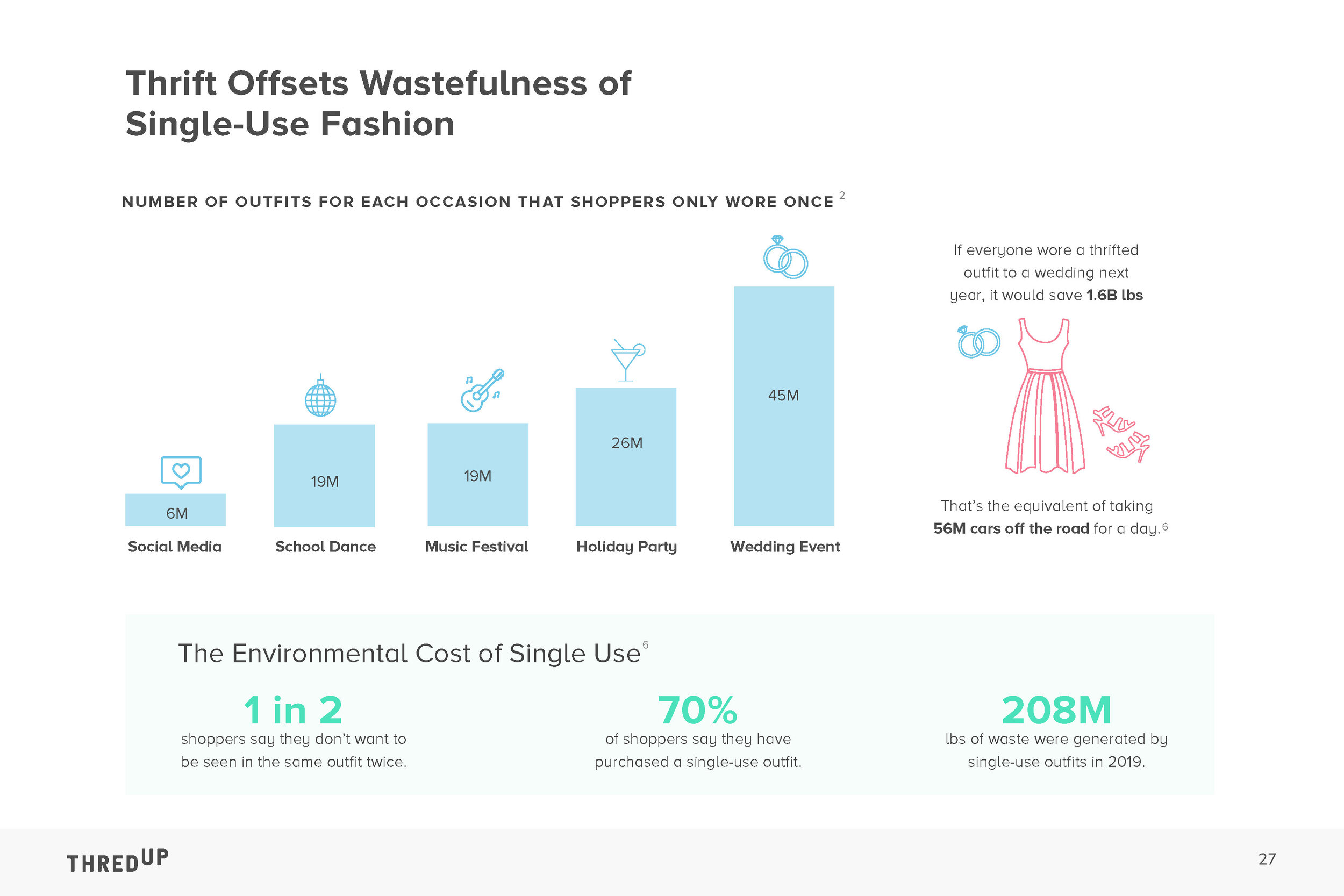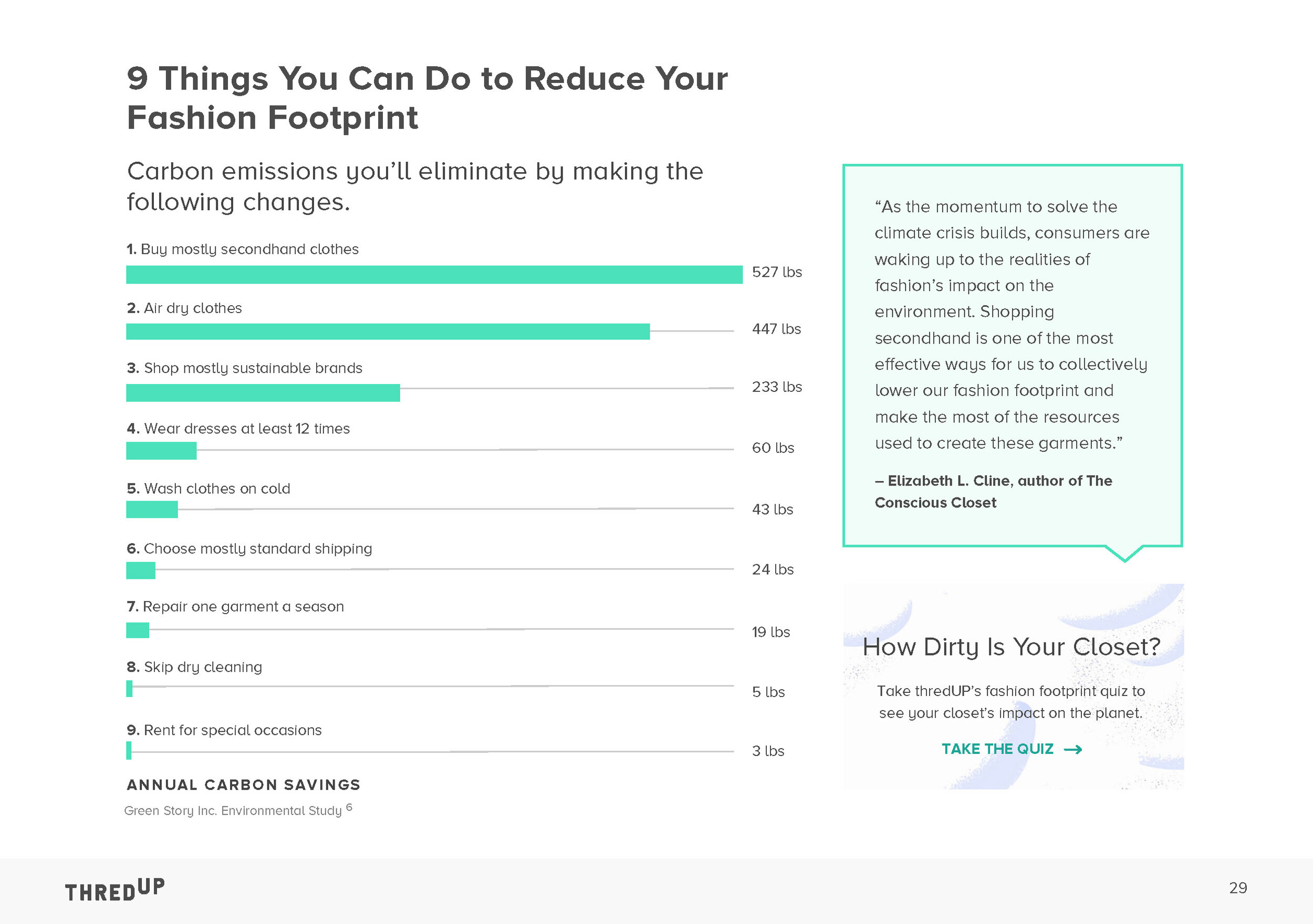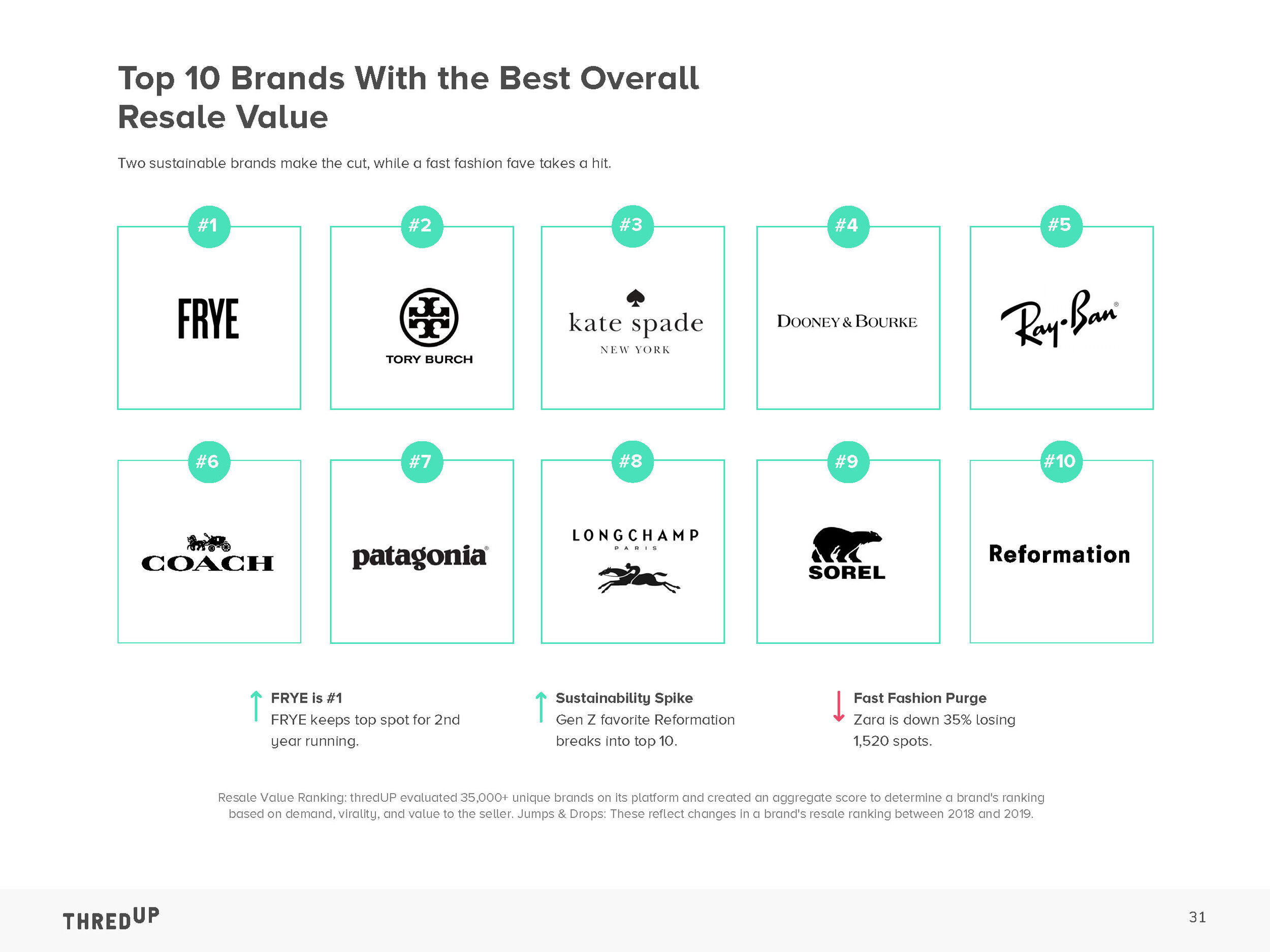Circular Fashion Education Toolkit
Online Learning Resources for Students and Teachers
Redress Educational Posters
Posters explain fashion’s environmental impact and encourage consumer actions designed by Redress
ECF Circular Fashion Programme Fact and Reference Sheet
This Fact and Reference sheet contains a full list of facts and references from the Background Information content in Modules 1, 2 and 3.
‘Our Jeans and the Planet’ Fact and Reference Sheet
This Fact and Reference sheet contains a full list of facts and references from the interactive learning website ‘Our Jeans and the Planet.’
Clothing Consumption, Usage, and Disposal Habits in Hong Kong Study
In September 2020, Redress commissioned a survey, conducted by Edelman Intelligence, to find out more about Hong Kong’s clothing consumption habits. Our survey found that almost one in three Hong Kong consumers discard their unwanted clothing in the bin, and further revealed that almost one-third of clothes in Hong Kong wardrobes are never or rarely worn.
Redress Fact Cards
Graphic fact cards about fashion’s environmental impact designed by Redress
Redress Clothing Lifecycle Diagram - Circular Fashion System
Diagram of the clothing life cycle within the circular fashion system.
Redress Textile Waste Collection and Sorting Infographic
Learn about what happens to your clothes after you donate them to NGO Redress, and what you as a consumer can do to help address the challenge of textile waste.
Greenpeace Report - Timeout for Fast Fashion
A diagram showing how the linear fashion system creates waste and pollution along the supply chain.
Greenpeace Report - After the Binge, the Hangover: Insights into the Minds of Clothing Consumers
Graphs from Greenpeace’s International Fashion Consumption Survey, “After the Binge, the Hangover: Insights into the Minds of Clothing Consumers”.
The Chemistry of a Football Shirt
This infographic shows the molecular structure of polyester, cotton, elastane and polyurethane, all common materials used to make our clothes.
Green European Journal Article: “What to Wear? Why Fast Fashion is Costing the earth”
These illustrations come from the Green European Journal article ‘What to Wear? Why Fast Fashion is Costing the Earth’. It compares the environmental impact of an outfit in 2019 with the predicted environmental impact of an outfit in 2049 made using new environmentally friendly technologies.
World Resources Institute: The Apparel Industry’s Environmental Impact in 6 Graphics
Infographics from the World Resources Institute (WRI)’s article, “The Apparel Industry’s Environmental Impact in 6 Graphics”.
Ellen MacArthur Foundation Circular Economy Diagram
This diagram from the Ellen Macarthur Foundation, sometimes called the “butterfly diagram”, illustrates resource flows in a circular economy.
Make Fashion Circular Infographics
Graphs and infographics from the Ellen Macarthur Foundation’s “Make Fashion Circular Report. The Ellen MacArthur Foundation works to raise awareness of waste and pollution in our “take-make-dispose” system and build a framework for a new circular economy that is restorative and regenerative by design.
ThredUP 2020 Resale Report
Graphs from the ThredUP 2020 Resale Report. ThredUP is the world’s largest online consignment and thrift store.
Explore Our Other Resources
Explore Our Learning Modules
ABOUT REDRESS
Redress is a pioneering Hong Kong based environmental charity with a mission to educate and empower the fashion industry and consumers to reduce clothing’s negative environmental impact by shifting to circular solutions. Our education programme focuses on educating consumers in Hong Kong of all ages about their fashion footprint and empowering them to drive change through circular solutions like buying more responsibly, donating clothes for reuse, or shopping secondhand.
ABOUT THE ECF CIRCULAR FASHION EDUCATION TOOLKIT
This bilingual education toolkit including a handful of student and teacher resources is funded by the Environment and Conservation Fund and the Environmental Campaign Committee. It was designed in consultation with teachers and curriculum advisors from the English Schools Foundation, the Education Bureau of the Government of the Hong Kong Special Administrative Region, and our wider network of Hong Kong schools, who provided invaluable guidance, support and feedback.
